RNA interference mediated therapy for neurodegenerative diseases
Covello , et al. Dec
U.S. patent number 10,513,701 [Application Number 15/561,208] was granted by the patent office on 2019-12-24 for rna interference mediated therapy for neurodegenerative diseases. This patent grant is currently assigned to UNIVERSIT DEGLI STUDI DI TRENTO. The grantee listed for this patent is UNIVERSIT DEGLI STUDI DI TRENTO. Invention is credited to Giuseppina Covello, Michela Alessandra Denti, Kavitha Siva.

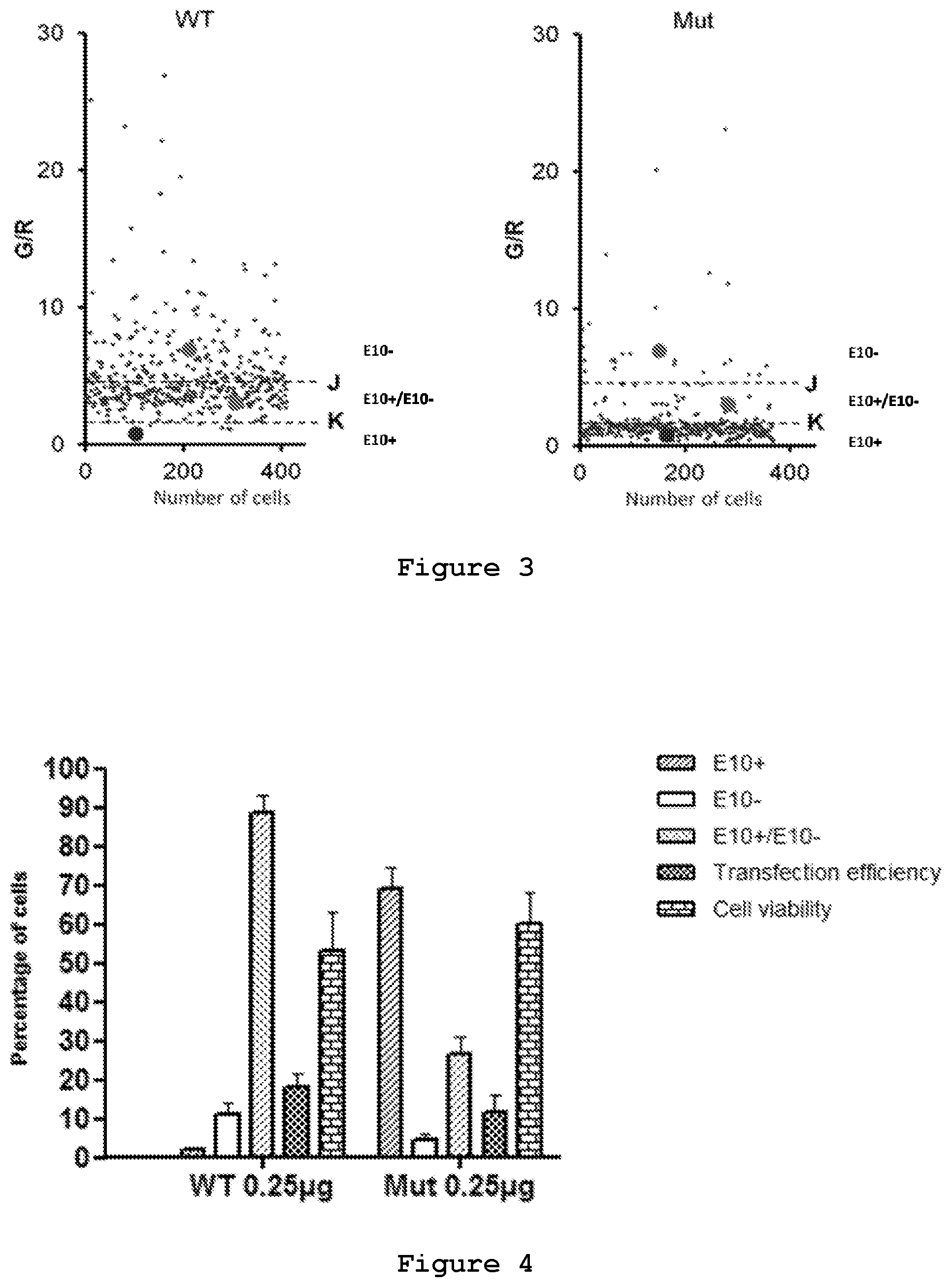

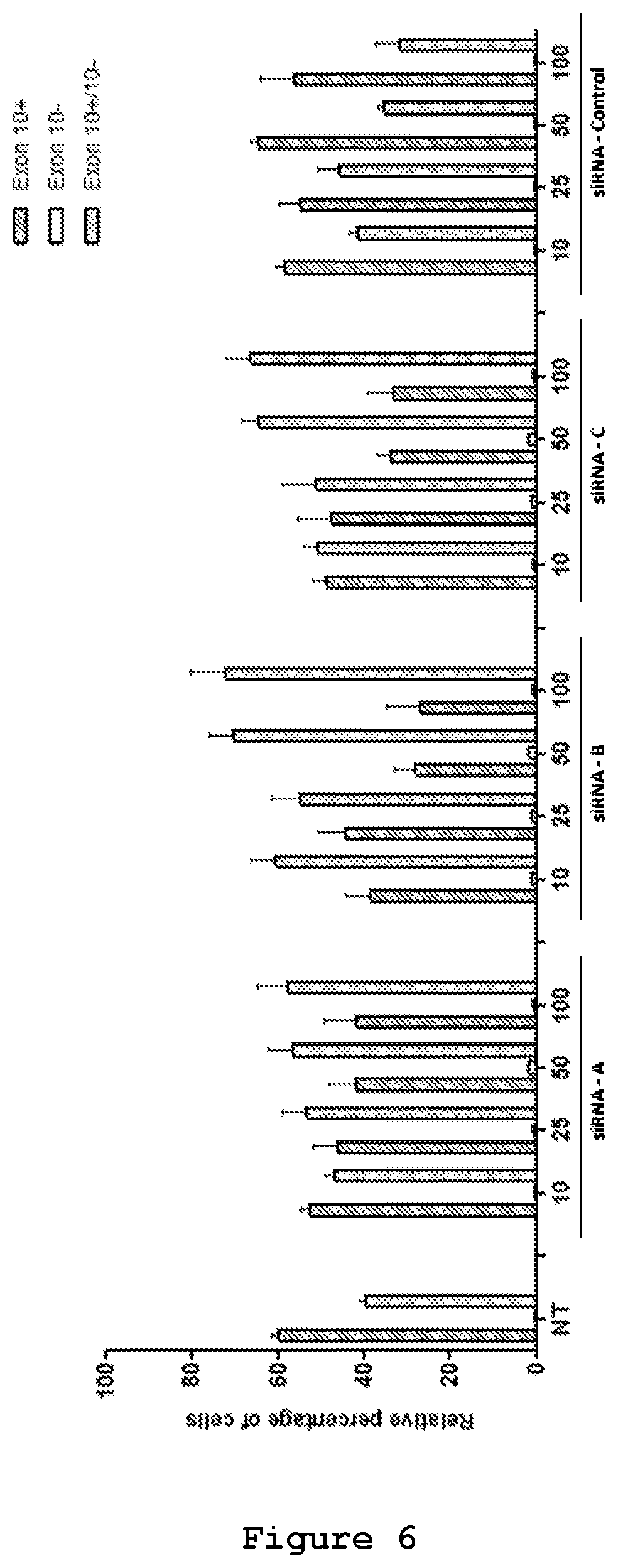
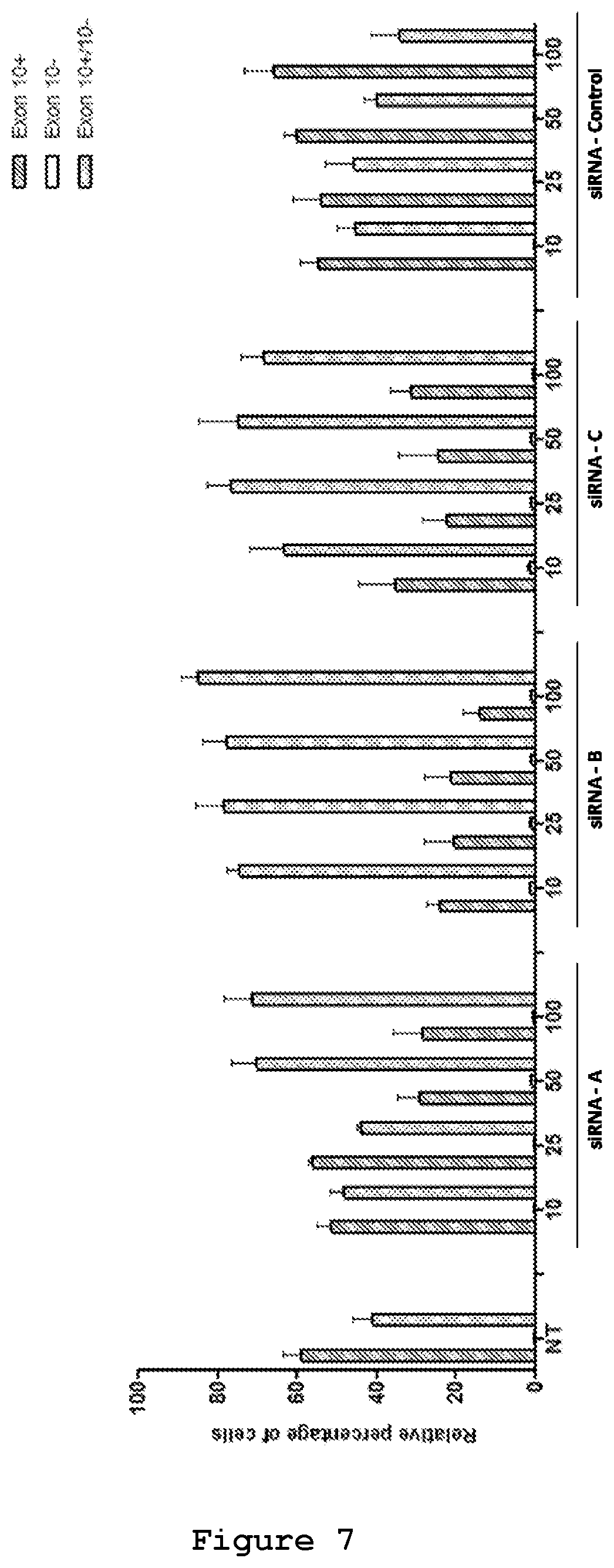


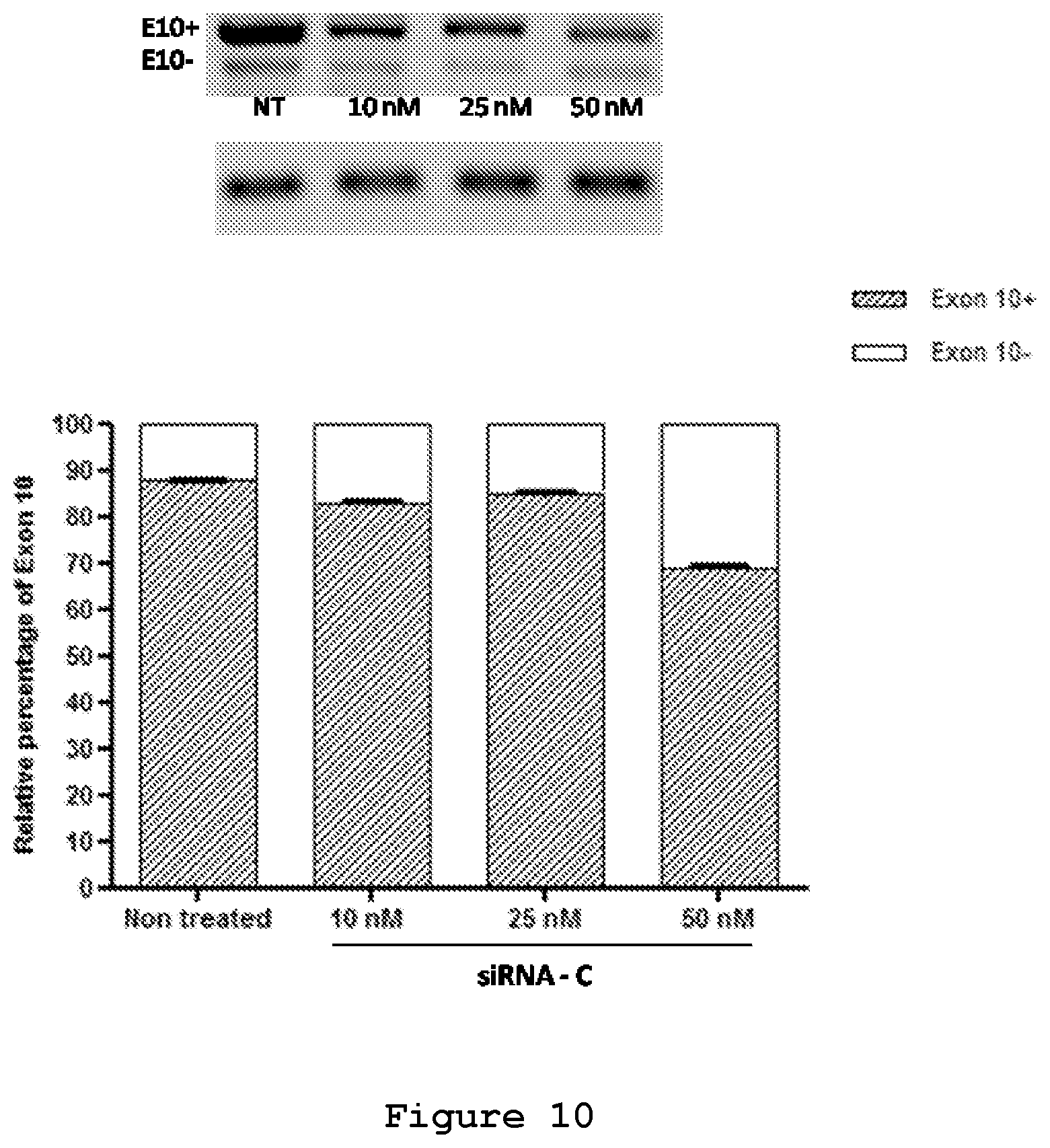
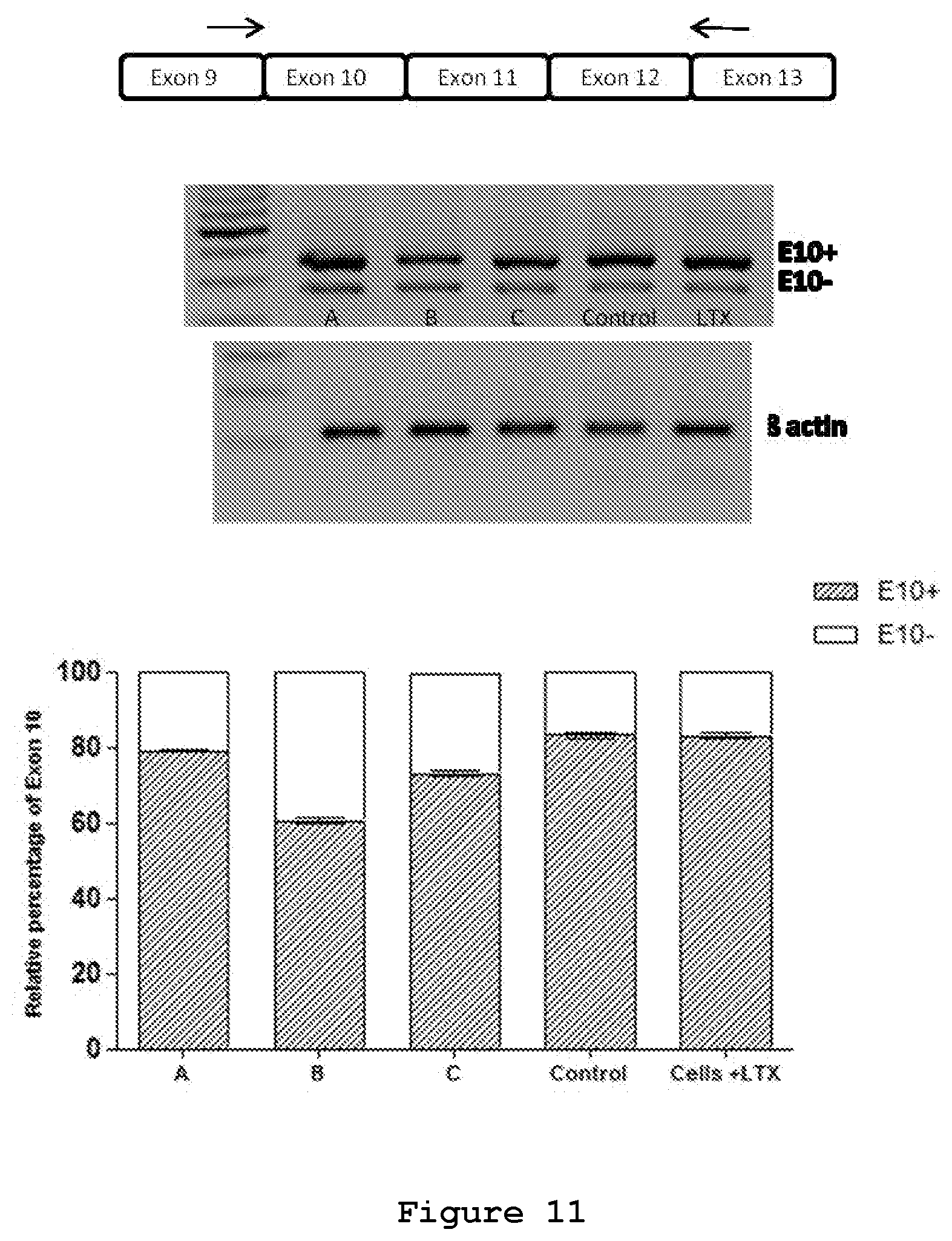
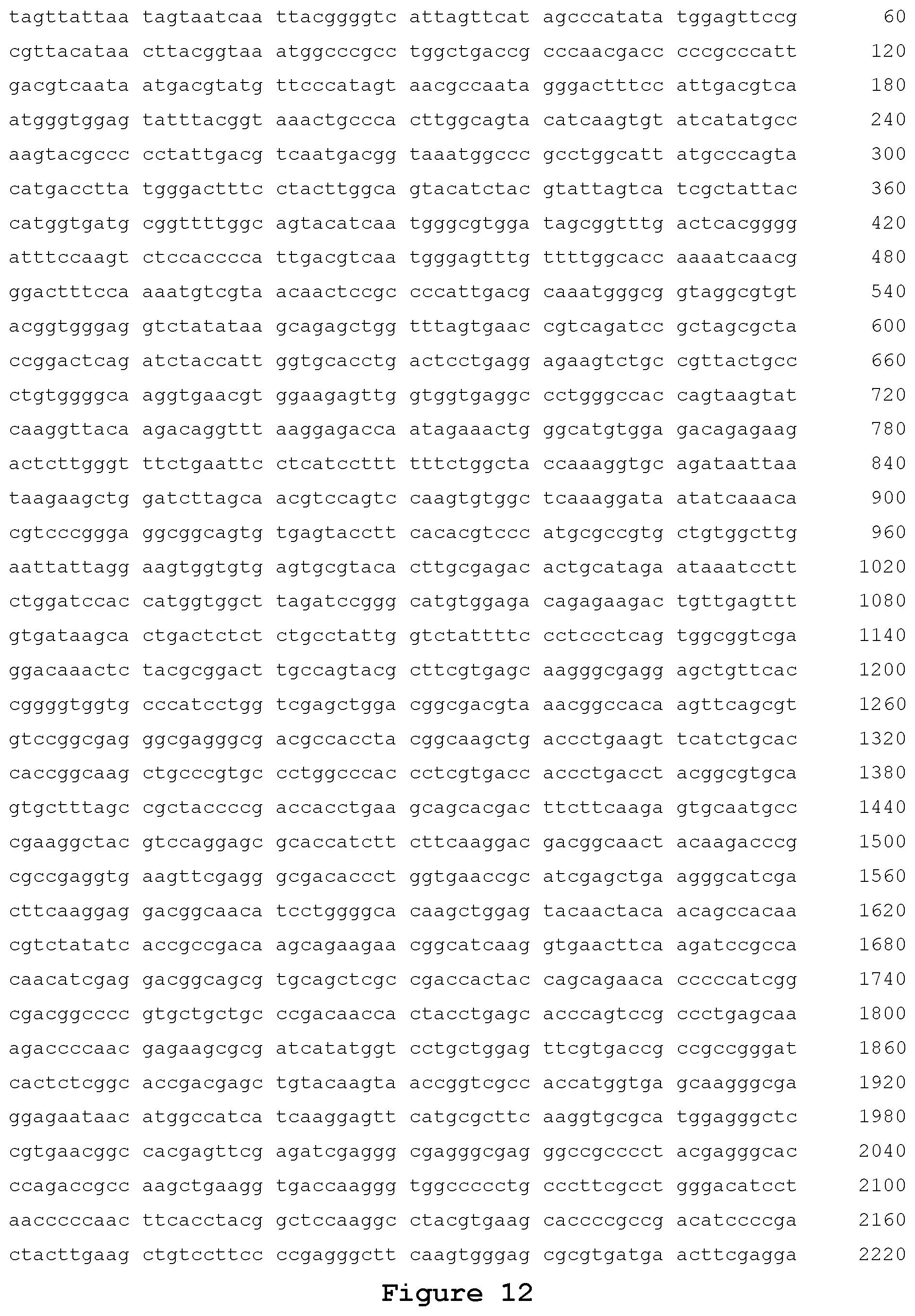
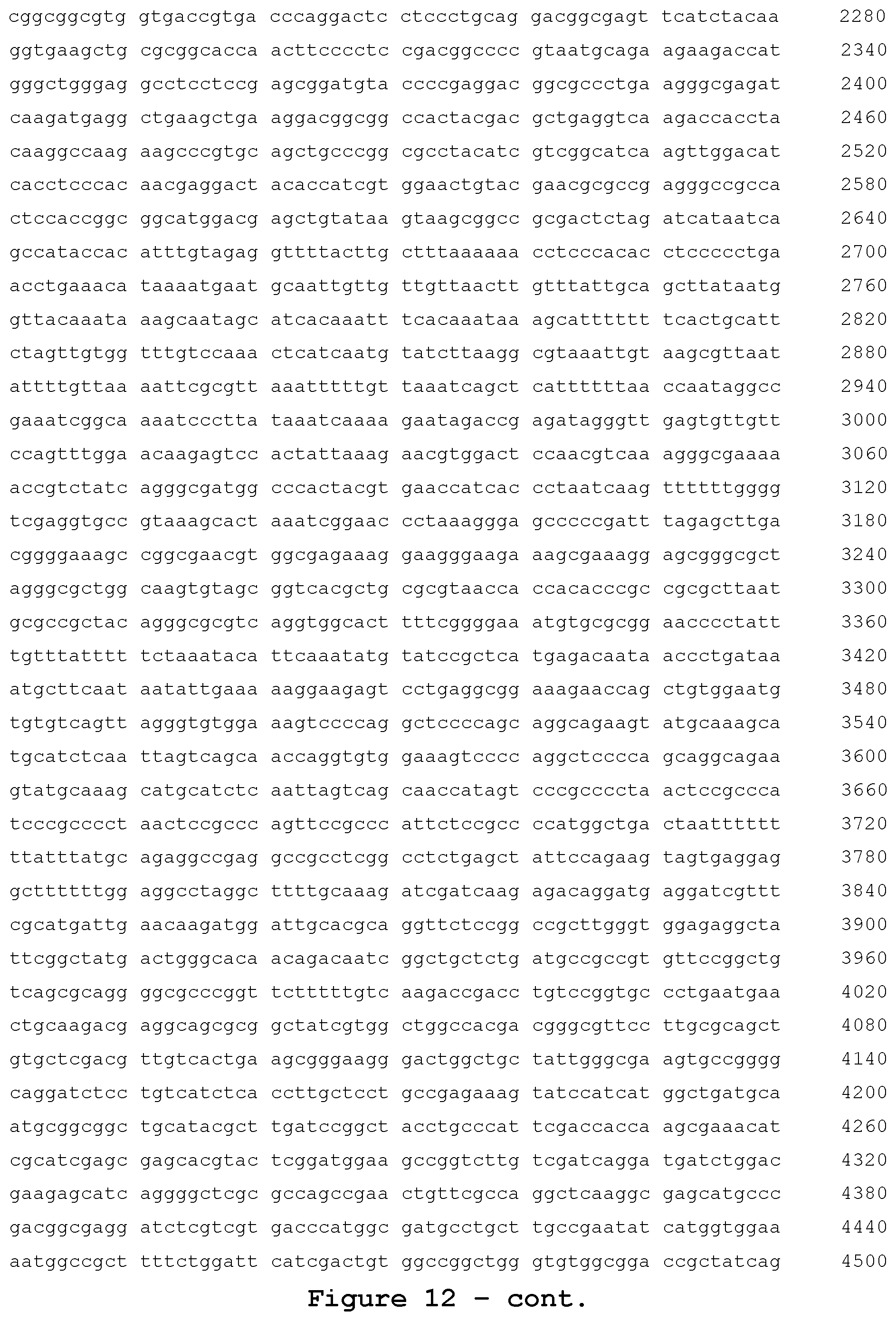
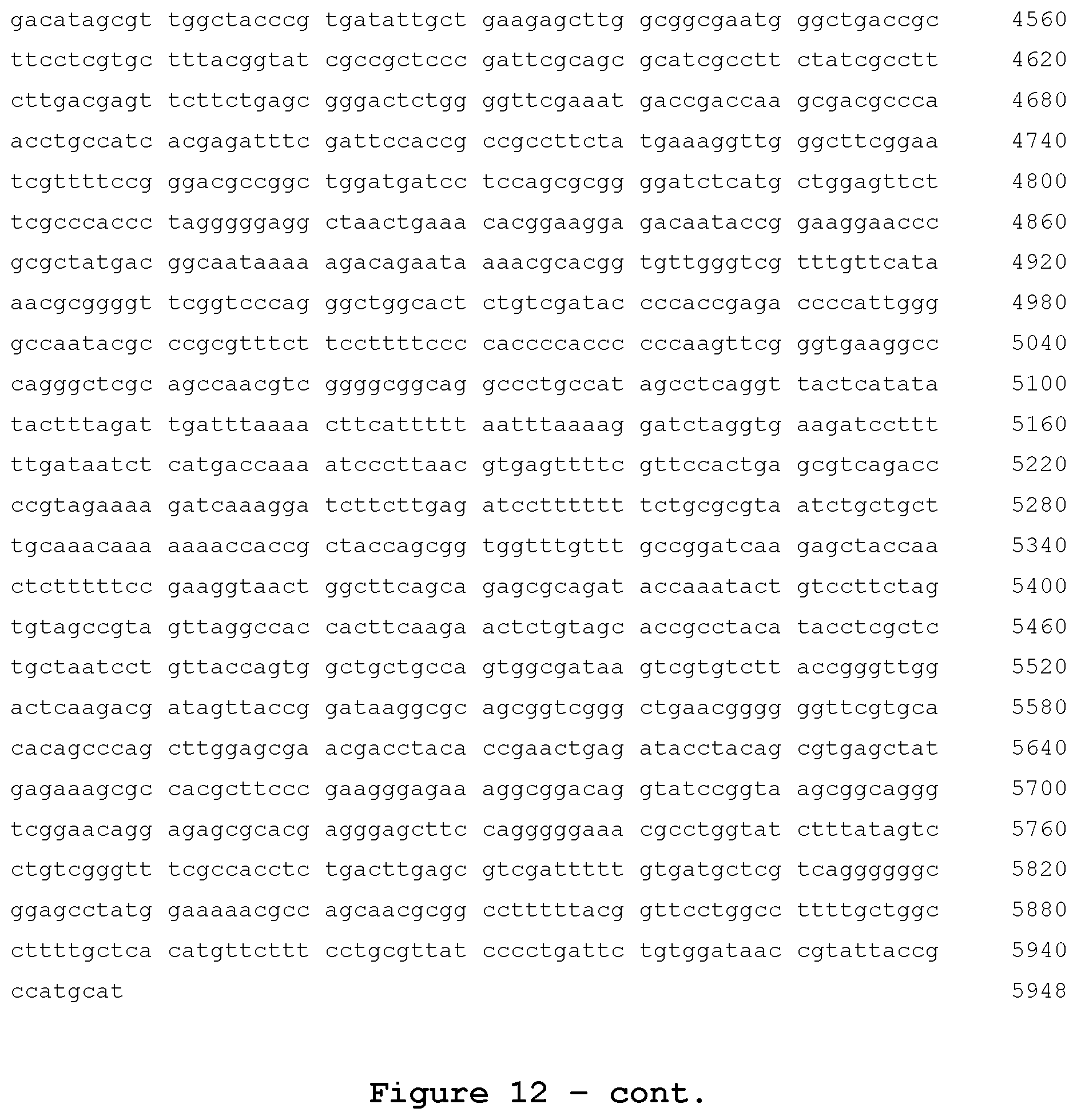
View All Diagrams
| United States Patent | 10,513,701 |
| Covello , et al. | December 24, 2019 |
RNA interference mediated therapy for neurodegenerative diseases
Abstract
Therapeutic agent for use in the treatment of neurodegenerative diseases associated with abnormalities of MAPT gene encoded protein tau, wherein said therapeutic agent comprises one or more siRNAs targeting MAPT exon 10 sequence.
| Inventors: | Covello; Giuseppina (Trento, IT), Denti; Michela Alessandra (Trento, IT), Siva; Kavitha (Chennai, IN) | ||||||||||
|---|---|---|---|---|---|---|---|---|---|---|---|
| Applicant: |
|
||||||||||
| Assignee: | UNIVERSIT DEGLI STUDI DI TRENTO
(Trento, IT) |
||||||||||
| Family ID: | 53189983 | ||||||||||
| Appl. No.: | 15/561,208 | ||||||||||
| Filed: | March 24, 2016 | ||||||||||
| PCT Filed: | March 24, 2016 | ||||||||||
| PCT No.: | PCT/IB2016/051676 | ||||||||||
| 371(c)(1),(2),(4) Date: | September 25, 2017 | ||||||||||
| PCT Pub. No.: | WO2016/151523 | ||||||||||
| PCT Pub. Date: | September 29, 2016 |
Prior Publication Data
| Document Identifier | Publication Date | |
|---|---|---|
| US 20180066254 A1 | Mar 8, 2018 | |
Foreign Application Priority Data
| Mar 25, 2015 [IT] | TO2015A0185 | |||
| Current U.S. Class: | 1/1 |
| Current CPC Class: | C12N 15/113 (20130101); A61K 31/713 (20130101); C12N 2310/3515 (20130101); C12N 2310/315 (20130101); C12N 2310/14 (20130101); C12N 2310/3533 (20130101); C12N 2310/322 (20130101); C12N 2310/3533 (20130101) |
| Current International Class: | C12N 15/113 (20100101); A61K 31/713 (20060101); C12N 5/00 (20060101) |
References Cited [Referenced By]
U.S. Patent Documents
| 2003/0170704 | September 2003 | Stamm et al. |
| 2009/0176728 | July 2009 | Yague et al. |
| 2016/0032285 | February 2016 | Rigo |
| WO 01/32703 | May 2001 | WO | |||
| WO 2007/107789 | Sep 2007 | WO | |||
| WO 2014/153236 | Sep 2014 | WO | |||
| WO 2015/010135 | Jan 2015 | WO | |||
Other References
|
International Search Report for PCT/IB2016/051676, dated Jun. 1, 2016, 7 pages. cited by applicant . Written Opinion of the ISA for PCT/IB2016/051676, dated Jun. 1, 2016, 8 pages. cited by applicant . Zhou Jianhua et al., "Alternative splicing of exon 10 in the tau gene as a target for treatment of tauopathies", BMC Neuroscience, vol. 9, No. Suppl 2, Dec. 3, 2008, pp. 1-8. cited by applicant . Kalbfuss et al., "Correction of Alternative Splicing of Tau in Frontotemporal Dementia and Parkinsonism Linked to Chromosome 17", Journal of Biological Chemistry, vol. 276, No. 46, Nov. 9, 2001, pp. 42986-42993. cited by applicant . Covello, "Antisense RNA-induced exon-skipping for the gene therapy of frontotemporal dementia and parkinsonism associated with chromosome 17 (FTDP-17)", FEBS Journal, Sep. 2012, vil. 279, No. Suppl. 1 Iss, SI, p. 509. cited by applicant . Xu Hong et al., "Tau Silencing by siRNA in the P301S Mouse Model of Tauopathy", Current Gene Therapy vol. 14, No. 5, Oct. 1, 2014, pp. 343-351. cited by applicant . Sud et al., "Antisense-mediated Exon Skipping Decreases Tau Protein Expression: A Potential Therapy for Tauopathies", Molecular Therapy--Nucleic Acids, vol. 3, E180, Jul. 29, 2014, pp. 1-11. cited by applicant . Miller et al., "Targeting Alzheimer's disease genes with RNA interference: An efficient strategy for silencing mutant alleles", Nucleic Acids Research, vol. 32, No. 2, Jan. 30, 2004, pp. 661-668. cited by applicant . Stoilov et al. A high-throughput screening strategy identifies cardiotonic steroids as alternative splicing modulators. Proc Natl Acad Sci U S A (2008) 105(32): 11218-23. cited by applicant . Rodriguez-Martin et al. Correction of tau mis-splicing caused by FTDP-17 MAPT mutations by spliceosome-mediated RNA trans-splicing. Hum Mol Genet (2009) 18(17): 3266-73. cited by applicant . Cashman et al. Neuroblastoma x spinal cord (NSC) hybrid cell lines resemble developing motor neurons. Dev Dyn (1992); 194(3):209-21. cited by applicant . Maier et al. Differentiated NSC-34 motoneuron-like cells as experimental model for cholinergic neurodegeneration. Neurochem Int (2013) 62(8): 1029-38 9. cited by applicant . McCormack et al., Alpha-synuclein suppression by targeted small interfering RNA in the primate substantia nigra. PLoS One 5: el2122, 2010. cited by applicant . Wang et al. Therapeutic gene silencing delivered by a chemically modified small interfering RNA against mutant SOD1 slows amyotrophic lateral sclerosis progression. J Biol Chem 283:, 2008, 15845-15852. cited by applicant . Difiglia et al. Therapeutic silencing of mutant huntingtin with siRNA attenuates striatal and cortical neuropathology and behavioral deficits. Proc Natl Acad Sci USA (2007) 104: 17204-17209. cited by applicant . Senechal et al. (2007). Amyloid precursor protein knockdown by siRNA impairs spontaneous alternation in adult mice. J Neurochem 102: 1928-1940. cited by applicant . Rettig GR, Behlke MA Progress toward in vivo use of siRNAs-II Mol Ther. Mar. 2012;20 (3):483-512. cited by applicant . Kandhavelu et al., FEBS Journal, vol. 279, No. Suppl. 1, Sp. Iss. SI, P22-11 Sep. 2012 (Sep. 2012), p. 509. cited by applicant . Wood M, et al., "Modulating the Expression of Disease Genes with RNA-Based Therapy," PLoS Genetics 3: e109 (2007). cited by applicant . Nishikura K, "A Short Primer on RNAi: RNA-Directed RNA Polymerase Acts as a Key Catalyst," Cell, vol. 107:415-418 (2001). cited by applicant . Robb, et al., "Specific and potent RNAi in the nucleus of human cells," Nat Structural Molecular Biology, vol. 12:133-7 (2005). cited by applicant . Zhang, et al., "RNA interference, a potential strategy for isoform-specific phosphatidylinositol 3-kinase targeted therapy in ovarian cancer," Cancer Biology & Therapy, 3: 1283-1289 (2004). cited by applicant . Shen, et al., "Vector-based RNAi approach to isoform-specific downregulation of vascular endothelial growth factor (VEGF)165 expression in human leukemia cells," Leukemia Research 31: 515-521 (2007). cited by applicant . Banda, et al., "Targeting of Liver Mannan-Binding Lectin-Associated Serine Protease-3 with RNA Interference Ameliorates Disease in a Mouse Model of Rheumatoid Arthritis," Immunohorizons. 2: 274-295. doi:10.4049/immunohorizons.1800053 (2018). cited by applicant . Watts, et al., "Gene silencing by siRNAs and antisense oligonucleotides in the laboratory and the clinic," J Pathol. 226: 365-379. doi:10.1002/path.2993 (2012). cited by applicant . Elbashir, et al., "RNA interference is mediated by 21-and 22- nucleotide RNAs," Genes & Development 15:188-200 (2001). cited by applicant. |
Primary Examiner: McGarry; Sean
Attorney, Agent or Firm: Nixon & Vanderhye P.C.
Claims
The invention claimed is:
1. A therapeutic agent comprising one or more siRNAs targeting MAPT gene exon 10, wherein the one or more siRNAs comprise a double stranded RNA comprising: (1) a sense strand comprising a base sequence of SEQ ID NO.: 2, 4, or 6, wherein the sense strand comprises 19-29 continuous bases of mRNA corresponding to the MAPT gene exon 10 sequence set forth in SEQ ID NO.: 1; and (2) an antisense strand comprising a sequence complementary thereto, wherein the double stranded RNA optionally has a single stranded overhang at the terminal of the sense strand and/or antisense strand, and wherein the one or more siRNAs are capable of inducing the selective degradation of exon 10-containing MAPT transcripts.
2. A method for the treatment of a neurodegenerative disease associated with abnormalities of MAPT gene encoded protein tau comprising administering to a patient in need of said treatment a therapeutically effective amount of the therapeutic agent of claim 1.
3. A pharmaceutical composition comprising the therapeutic agent of claim 1 and a pharmaceutically acceptable carrier.
4. The therapeutic agent according to claim 1, wherein the region of complementarity between the sense strand and antisense strand consists of the sequence of SEQ ID NO.: 2, 4, or 6.
5. The therapeutic agent according to claim 1, wherein the sense strand consists of the sequence of SEQ ID NO.: 2, 4, or 6, and the antisense strand consists of a sequence complementary thereto.
6. The therapeutic agent according to claim 1, wherein the sense strand comprises the base sequence of SEQ ID NO.: 2.
7. The therapeutic agent according to claim 1, wherein the sense strand comprises the base sequence of SEQ ID NO.: 4.
8. The therapeutic agent according to claim 1, wherein the sense strand comprises the base sequence of SEQ ID NO.: 6.
9. The therapeutic agent according to claim 4, wherein the region of complementarity consists of the sequence of SEQ ID NO.: 2.
10. The therapeutic agent according to claim 4, wherein the region of complementarity consists of the sequence of SEQ ID NO.: 4.
11. The therapeutic agent according to claim 4, wherein the region of complementarity consists of the sequence of SEQ ID NO.: 6.
12. The therapeutic agent according to claim 5, wherein the sense strand consists of a base sequence of SEQ ID NO.: 2.
13. The therapeutic agent according to claim 5, wherein the sense strand consists of a base sequence of SEQ ID NO.: 4.
14. The therapeutic agent according to claim 5, wherein the sense strand consists of a base sequence of SEQ ID NO.: 6.
15. The therapeutic agent according to claim 4, wherein the double stranded RNA comprises a single stranded overhang at the 3' terminal end of the sense strand and the 3' terminal end of the antisense strand, wherein each of the overhangs consists of two monophosphate deoxyribosylthymine.
16. A method for the treatment of a neurodegenerative disease associated with abnormalities of MAPT gene encoded protein tau comprising administering to a patient in need of said treatment a therapeutically effective amount of the therapeutic agent of claim 4.
17. A method for the treatment of a neurodegenerative disease associated with abnormalities of MAPT gene encoded protein tau comprising administering to a patient in need of said treatment a therapeutically effective amount of the therapeutic agent of claim 5.
18. The method of claim 2 wherein the neurodegenerative disease associated with abnormalities of MAPT gene encoded protein tau is Alzheimer disease, Huntington disease, type 1 myotonic dystrophy, Parkinson disease, or frontotemporal dementia with parkinsonism linked to chromosome 17 (FTDP-17).
19. The method of claim 16 wherein the neurodegenerative disease associated with abnormalities of MAPT gene encoded protein tau is Alzheimer disease, Huntington disease, type 1 myotonic dystrophy, Parkinson disease, or frontotemporal dementia with parkinsonism linked to chromosome 17 (FTDP-17).
Description
This application is the U.S. national phase of International Application No. PCT/IB2016/051676 filed 24 Mar. 2016, which designated the U.S. and claims priority to IT Patent Application No. TO2015A000185 filed 25 Mar. 2015, the entire contents of each of which are hereby incorporated by reference.
FIELD OF THE INVENTION
The present invention concerns RNA interference mediated therapy for neurodegenerative diseases associated with abnormalities of microtubule-associated protein tau.
BACKGROUND OF THE INVENTION
Modulation of gene expression by endogenous, non-coding RNAs have been increasingly appreciated and known to play a role in eukaryotic development, and epigenetic control. Recently, methods have been developed to trigger RNA interference (RNAi) against specific targets in mammalian cells by introducing exogenously produced or intra-cellularly expressed small interfering RNA (siRNA) molecules.
These quick, inexpensive and effective methods have proven to be effective for knockdown experiments in vitro and in vivo. The ability to attain such selective gene silencing has led to the hypothesis that siRNAs can be used to suppress gene expression for therapeutic benefit. The ideal candidates for such an siRNA approach would be dominantly inherited diseases.
Recent studies by Miller V et al.sup.1 have shown that siRNAs can be used to target untreatable neurodegenerative diseases such as polyglutamine (polyQ) neurodegeneration in Machado-Joseph disease, spinocerebellar ataxia type 3 (MJDSCA3) and Frontotemporal dementia with parkinsonism linked to chromosome 17 (FTDP-17). These studies have focused exclusively on selective silencing of the transcript produced by the mutant allele.sup.1. RNA interference has proven to be an efficient strategy for silencing mutant tau allele V337M, however, selective depletion of mutant allele was not completely achieved in the study because there was a partial depletion of the wild type allele of tau.sup.1. More recently, another example of MAPT-targeting siRNAs was described.sup.2, wherein a mix of four siRNAs aimed at suppressing all tau isoforms in a mouse model of tauopathy was tested.
The MAPT (Microtubule associated protein tau) gene consists of 16 exons and its expression is regulated by complex alternative splicing. This results in the production of two types of alternatively spliced transcripts: one bearing Exon 10, also known as 4R (Four microtubule repeats) isoform and the other that lacks Exon 10 is called 3R isoform (Three microtubule repeats). Equal levels of these two isoforms are expressed in normal human adult brain. Though several mutations causing FTDP-17 are known in MAPT, a half of these affect alternative splicing of Exon 10. These include mis-sense mutations, silent mutations and point mutations which are located in Exon 10, introns 9 and 10. They are known to implicate an increase in Exon 10 causing an excessive accumulation of 4R. This leads to the formation of neurofibrillary tangles, hence resulting in neurodegeneration.
It is worth mentioning that abnormalities of tau are linked to the pathogenesis of neurodegenerative disease collectively termed as "tauopathies", and significantly elevated levels of tau are present in AD (Alzheimer's disease) brains.
A few approaches have been used for the correction of Exon 10 inclusion in FTDP-17: Small molecules: a screening has been performed which yielded cardiotonic steroids as exon 10 splicing modulator, albeit non-specific, drugs.sup.3, and Antisense oligonucleotides for exon skipping: US-A-2003/0170704 by Stamm et al. relates to substances which are capable of controlling the inclusion of MAPT exon 10 (proteic splicing regulators or their cDNA, polypeptides controlling the phosphorylation of splicing regulators, or their cDNA, and antisense oligonucleotides which interact with the splice junctions of MAPT exon 10). Moreover, work by Kalbfuss et al..sup.4 has demonstrated that oligoribonucleotides binding to Exon 10 splicing junctions could suppress the predominant inclusion of Exon 10 in tau mRNA in the context of rat PC12 cells. However, recent work by Sud R et al.sup.5 showed that targeting Exon 10 with antisense morpholino oligonucleotides did not yield exon-skipping in neuroblastoma cell lines. These authors claim that splicing regulation of exon 10 in cells expressing predominantly 4R isoform may vary from the neuroblastoma cell line in which the 3R isoform dominates. Trans-splicing of exon 10: RNA reprogramming using spliceosome-mediated RNA trans-splicing (SMaRT) was used to correct aberrant Exon 10 splicing resulting from FTDP-17 mutations in a minigene system in cells in culture.sup.6. This approach, however, is affected by low efficiency.
OBJECT AND SUMMARY OF THE INVENTION
The object of the present invention is to provide a therapeutic agent effective in the treatment of neurodegenerative diseases associated with abnormalities of MAPT gene encoded protein tau.
According to the invention, the above object is achieved thanks to the method specified in the ensuing claims, which are understood as forming an integral part of the present description.
In an embodiment, the instant disclosure discloses a therapeutic agent for use in the treatment of neurodegenerative diseases associated with abnormalities of MAPT gene encoded protein tau, wherein said therapeutic agent comprises one or more siRNA targeting MAPT gene exon 10 sequence (SEQ ID No.:1).
In a further embodiment, the instant disclosure provides for a method for the treatment of neurodegenerative diseases associated with abnormalities of MAPT gene encoded protein tau comprising administering to a patient who needs it of one or more siRNA, wherein the one or more siRNA comprise a sense strand comprising at least 19 continuous bases of mRNA corresponding to the MAPT exon 10 sequence of SEQ ID No.: 1 and an antisense strand comprising a sequence complementary thereto in an amount sufficient to make said treatment, wherein the one or more siRNA induce selective degradation of exon 10-containing MAPT transcripts.
In a still further embodiment, the instant disclosure concerns a pharmaceutical composition comprising one or more siRNA, wherein the one or more siRNA comprise a sense strand comprising at least 19 continuous bases of mRNA corresponding to the MAPT exon 10 sequence of SEQ ID No.: 1 and an antisense strand comprising a sequence complementary thereto and a pharmaceutically acceptable carrier.
BRIEF DESCRIPTION OF THE DRAWINGS
The invention will now be described, by way of example only, with reference to the enclosed figures of drawing, wherein:
FIG. 1. Semi-quantitative RT-PCR analysis of levels of exon 10 in SH-SY5Y cells transfected with wild type and N279 mutant plasmid. The gel electrophoresis shows the RT-PCR products of transcripts of the minigenes, containing exon 10 (E10+, 290 bp) and without exon 10 (E10-, 210 bp). Histogram represents the densitometric units of each treatment condition normalised on .beta. actin. Values represent mean SD.+-. (n=3).
FIG. 2. Representative images of SH-SY5Y cell line transfected with 0.25 .mu.g of either wild type plasmid or mutant plasmid. A) Wild type and B) Mutant N279 reporter plasmids.
FIG. 3. Setting up of threshold values based on intensities of RFP and GFP. Scatter plots representing Green/Red (G/R) values of each cell in a particular well bearing one of the dual reporter plasmids (WT and Mut, respectively). The indicated thresholds are arbitrarily selected to classify the cell population in three different classes.
FIG. 4. Image based analysis of SHYS5Y cells transfected with Wild type and Mutant reporter plasmids. Histogram represents the selected read-outs of the quantitative analysis of the two reporters, such as the relative percentages of the three sub-populations of SHYS5Y cells classified by intensity properties, the transfection efficiency and the cell viability. Values represent mean.+-.SD (n=3)
FIG. 5. Human tau E10 sequences (capitals) and flanking I9 and I10 sequences (lower case). The 5' and 3' splice sites are denoted by 5'ss and 3'ss, respectively. Only FTDP-17 mutations affecting E10 splicing are indicated. Deletions are denoted by shaded triangles. The sequences and target position of the three designed siRNAs are indicated.
FIG. 6. An image based screening assay has been performed for the different siRNAs and compared to the values obtained with a control siRNA. siRNAs were cotransfected in SH-SY5Y cells together with 0.25 .mu.g of mutant reporter minigene plasmid. The values represent mean.+-.SD (n=3)
FIG. 7. An image based screening assay has been performed for the different siRNAs and compared to the values obtained with a control siRNA. siRNAs were cotransfected in SH-SY5Y cells together with 0.5 .mu.g of mutant reporter minigene plasmid. The values represent mean.+-.SD (n=3).
FIG. 8. Semi-quantitative RT-PCR analysis of SH-SY5Y cells transfected with the minigene reporter plasmid and siRNA A.
FIG. 9. Semi-quantitative RT-PCR analysis of SH-SY5Y cells transfected with the minigene reporter plasmid and siRNA B.
FIG. 10. Semi-quantitative RT-PCR analysis of SH-SY5Y cells transfected with the minigene reporter plasmid and siRNA C.
FIG. 11. Semi-quantitative RT-PCR of NSC34 cells transfected with three siRNAs or a control siRNA.
FIG. 12. PFLARE 5A MAPT Exon 10 nucleotide sequence.
FIG. 13. PFLARE 5A MAPT MUT Exon 10 nucleotide sequence.
DETAILED DESCRIPTION OF THE INVENTION
The invention will now be described in detail, by way of non limiting example, with reference to an RNA interference mediated therapy making use of a cell model recapitulating the Frontotemporal dementia with parkinsonism linked to chromosome 17 (FTDP-17) disease conditions. Nevertheless, the RNA interference mediated therapy herein disclosed can be used for the treatment of other neurodegenerative diseases associated with abnormalities in MAPT gene encoded protein tau, like for example Alzheimer's disease, Huntington's disease, type 1 myotonic dystrophy, and Parkinson's disease.
In the following description, numerous specific details are given to provide a thorough understanding of embodiments. The embodiments can be practiced without one or more of the specific details, or with other methods, components, materials, etc. In other instances, well-known structures, materials, or operations are not shown or described in detail to avoid obscuring aspects of the embodiments.
Reference throughout this specification to "one embodiment" or "an embodiment" means that a particular feature, structure, or characteristic described in connection with the embodiment is included in at least one embodiment. Thus, the appearances of the phrases "in one embodiment" or "in an embodiment" in various places throughout this specification are not necessarily all referring to the same embodiment. Furthermore, the particular features, structures, or characteristics may be combined in any suitable manner in one or more embodiments.
The headings provided herein are for convenience only and do not interpret the scope or meaning of the embodiments.
The present description concerns a therapeutic agent for use in the treatment of neurodegenerative diseases associated with abnormalities of MAPT gene encoded protein tau, wherein said therapeutic agent comprises one or more siRNAs targeting MAPT gene exon 10. Preferably, the therapeutic agent comprise a sense strand comprising at least 19 continuous bases of mRNA corresponding to the MAPT exon 10 sequence of SEQ ID No.: 1 and an antisense strand comprising a sequence complementary thereto.
In a further embodiment, the present description provides for use in the treatment of neurodegenerative diseases associated with abnormalities of MAPT gene encoded protein tau one or more siRNAs targeting MAPT gene exon 10, wherein the one or more siRNAs comprise a sense strand of 19-29 continuous bases of mRNA corresponding to the MAPT exon 10 sequence set forth in SEQ ID No.: 1 and an antisense strand comprising a sequence complementary thereto.
In a preferred embodiment, the present description concerns one or more siRNAs targeting MAPT gene exon 10 useful in the treatment of neurodegenerative diseases associated with abnormalities of MAPT gene encoded protein tau, wherein the one or more siRNAs are selected from i) a double strand RNA composed of a sense strand comprising a base sequence set forth in SEQ ID No.: 2, 4, 6, and an antisense strand comprising a sequence complementary thereto, which optionally has an overhang at the terminal of the sense strand and/or antisense strand, and ii) a double strand RNA composed of a sense strand comprising a base sequence wherein one to several bases have been added to and/or deleted from the 5' terminal and/or 3' terminal of the base sequence described in any one of SEQ ID No.: 2, 4, 6, and an antisense strand comprising a sequence complementary thereto, which optionally has an overhang at the terminal of the sense strand and/or antisense strand.
In a still further preferred embodiment, the instant description provides for one or more siRNAs targeting MAPT gene exon 10 able to induce selective degradation of exon 10-containing MAPT transcripts.
The neurodegenerative diseases associated with abnormalities of MAPT gene encoded protein tau that can benefit from the administration of one or more siRNAs targeting MAPT gene exon 10 are selected from Alzheimer disease, Huntington disease, type 1 myotonic dystrophy, Parkinson disease, frontotemporal dementia with parkinsonism linked to chromosome 17 (FTDP-17).
In a different embodiment, the description provides for a method of treatment of a neurodegenerative disease associated with abnormalities of MAPT gene encoded protein tau comprising administering to a patient who needs it of one or more siRNAs targeting MAPT gene exon 10, wherein the one or more siRNAs comprise a sense strand comprising at least 19 continuous bases of mRNA corresponding to the MAPT exon 10 sequence of SEQ ID No.: 1 and an antisense strand comprising a sequence complementary thereto in an amount sufficient to make said treatment, wherein the one or more siRNA induce selective degradation of exon 10-containing MAPT transcripts.
In a still further embodiment, the present description concerns a pharmaceutical composition comprising one or more siRNAs targeting MAPT gene exon 10, wherein the one or more siRNAs comprise a sense strand comprising at least 19 continuous bases of mRNA corresponding to the MAPT exon 10 sequence of SEQ ID No.: 1 and an antisense strand comprising a sequence complementary thereto and a pharmaceutically acceptable carrier.
The present disclosure shows the feasibility of an siRNA-based gene therapy to enable post-transcriptional gene silencing of Exon 10-containing MAPT transcripts in FTDP-17. A panel of siRNAs targeting tau mRNA containing Exon 10 have been designed, and tested in SH-SY5Y cells on a mutant minigene reporter plasmid in the context of N279 missense mutation (AAT to AAG) recapitulating FTDP-17 disease condition. Moreover, the 3 siRNAs were tested on NSC34 cells (a motor neuron-like cell line).sup.1 to validate the effects on endogenous condition with a predominant inclusion of Exon 10 (80%).
The effect of the siRNAs has been assayed using a high content imaging system. The results obtained through the screening assay have been further validated using an RT-PCR analysis. The effect on the endogenous Exon 10-containing MAPT transcripts has been tested using RT-PCR analysis.
In the instant description the Inventors designed a new approach for the restoration of a normal 4Rtau/3Rtau ratio, based on the use of siRNAs targeting MAPT exon 10 and inducing the selective degradation of the exon 10-containing MAPT transcripts. These siRNAs provide therapeutic benefit for FTDP-17 patients bearing mutations in MAPT exon 10 causing exon 10 inclusion, as the target sequences are not affected by the mutations.
The three siRNAs herein evaluated have the following nucleotide sequences:
TABLE-US-00001 siRNA A': sense strand: SEQ ID No.: 2 5'AGUCCAAGUGUGGCUCAAA3', antisense strand: SEQ ID No.: 3 5'UUUGAGCCACACUUGGACU3'; siRNA B': sense strand: SEQ ID No.: 4 5'GGCUCAAAGGAUAAUAUCA3', antisense strand: SEQ ID No.: 5 5'UGAUAUUAUCCUUUGAGCC3'; siRNA C': sense strand: SEQ ID No.: 6 5'GCAACGUCCAGUCCAAGUG3', antisense strand: SEQ ID No.: 7 5'CACUUGGACUGGACGUUGC3'.
Out of the 3 tested siRNAs (A, B and C), siRNA B shows maximum efficiency in transcript degradation. These results have been validated using a minigene recapitulating splicing mutation N279, and a similar effect is exhibited on NSC34.sup.7,8 (a hybrid of mouse spinal cord motor neurons and neuroblastoma cell line) cells.
A recent review by Rettig and colleagues.sup.9 has summarized the possible delivery approaches of the siRNA molecules and their success in clinical trials. The current development in the field and ongoing studies establishes the significance of these synthetic siRNAs, which may serve as potential therapeutics upon suitable delivery and administration.
Direct CNS (Central nervous system) administration is used as a method of choice in neurodegenerative diseases due to restricted entry across the blood brain barrier. Options of delivery include intrathecal, intraventricular, epidural and direct intratissue injection. Administration methods include long term infusions or through the use of mini pumps.
Chronic intraventricular pumps were used for the delivery of siRNAs against Amyloid precursor protein gene (App) to study Alzheimers related functions in adult mice. Efficient knockdowns were observed through potent siRNAs.sup.10.
By employing naked and unassisted delivery of siRNAs in buffered saline, chronic infusion was performed in non-human primates to suppress levels of .alpha. synucein.sup.11. This protein is known to be associated with Parkinson's disease. Mini osmotic pumps were used for the direct infusion into the substantia nigra leading to a decrease in .alpha. synucein both at mRNA and protein levels.
siRNAs with modified PS linkages and 2'F-pyrimidine residues near the ends of each strand.sup.12 were used for chronic infusion in to the CNS of SOD1 (G93A) mouse model of amyotrophic lateral sclerosis (ALS). Significant reduction of SOD1 mRNA was observed in the spinal cord. In the transgenic mouse model, an infusion over a 28 day period led to alleviated the progression of disease. The siRNAs were stable over the course of this period.
Cholesterol conjugated siRNAs.sup.13 were used for the direct intrastriatal injection to target mutant Huntington gene (Htt) in the context of Huntington's disease.
The above mentioned strategies highlight the different modes of delivery of siRNAs and demonstrate efficacy in vivo.
Materials and Methods
siRNAs
The following siRNAs--employed in the present experiments--were designed along the stretch of Exon (SEQ ID No.: 1), and produced by Eurofin Genomics, Ebersberg, Germany.
TABLE-US-00002 siRNA A: sense strand: SEQ ID No.: 19 5'AGUCCAAGUGUGGCUCAAAdTdT3', antisense strand: SEQ ID No.: 20 5'UUUGAGCCACACUUGGACUdTdT3'; siRNA B: sense strand: SEQ ID No.: 21 5'GGCUCAAAGGAUAAUAUCAdTdT3', antisense strand: SEQ ID No.: 22 5'UGAUAUUAUCCUUUGAGCCdTdT3'; siRNA C: sense strand: SEQ ID No.: 23 5'GCAACGUCCAGUCCAAGUGdTdT3', antisense strand: SEQ ID No.: 24 5'CACUUGGACUGGACGUUGCdTdT3'; control siRNA: sense strand: SEQ ID No : 8 5' UAAUGUAUUGGAACGCAUAdTdT3', antisense strand: SEQ ID No.: 9 5'UAUGCGUUCCAAUACAUUAdTdT3'.
The above siRNAs sequences differ from the SEQ ID NO.: 2 to 7 for the presence of an overhang consisting of two monophosphate deoxyribosylthymine (dT), which were introduced in SEQ ID No.: 2 to 7 at the 3' terminal in order to increase siRNA intracellular stability and efficiency thereof.
FIG. 5 shows human tau E10 sequence (capitals--corresponding to SEQ ID No.: 1) and flanking I9 and I10 sequences (lower case); the human tau E10 sequence comprising flanking I9 (11 bases) and I10 (26 bases) sequences is provided in SEQ ID No.: 18. The 5' and 3' splice sites are denoted by 5'ss and 3'ss, respectively. Only FTDP-17 mutations affecting Exon 10 splicing are indicated. Deletions are denoted by shaded triangles. The sequences and target position of the three designed siRNAs A, B and C are provided.
SHYS5Y Cell Line
The SH-SY5Y cell line (ATCC-LGC standards, Teddington, UK; #CRL-2266) used for transfection experiments is a thrice cloned (SK-N-SH.fwdarw.SH-SY.fwdarw.SH-SY5.fwdarw.SH-SY5Y) subline of the neuroblastoma cell line SK-N-SH with a content of 15% Exon 10+ and 85% of Exon 10--in its transcript. The transfection efficiency (25% to 30%) in this cell line is comparatively higher than the other neuroblastoma cell lines. Therefore, this cell line was chosen to test the efficacy of siRNAs against endogenous Exon 10+ transcripts and for co-transfections of siRNAs with minigene reporter plasmids.
NSC-34 Cell Line
Mouse Motor neuron like hybrid cell line NSC-34 (Cellutions biosystems, Burlington, Ontario, Canada; #CLU140-A) was produced by fusion of motor neuron enriched, embryonic mouse spinal cord cells with mouse neuroblastoma.sup.7,8. The cultures contain two populations of cells: small, undifferentiated cells that have the capacity to undergo cell division and larger, multi-nucleate cells. These cells express many properties of motor neurons, including choline acetyltransferase, acetylcholine synthesis, storage and release and neurofilament triplet proteins. These cells can be differentiated using the all trans retinoic acid (atRA) thus establishing itself as a suitable model for the in vitro study of pathophysiology in motor neurons.
Mutagenesis of Fluorescent Reporter with Exon 10
The fluorescent reporter plasmid created by Peter Stoilov and colleagues.sup.3, PFLARE 5A MAPT Exon 10 also referred to as the wild-type (WT) plasmid (SEQ ID No.: 10--FIG. 12), was mutated using the Quick change II site XL site-directed mutagenesis kit (Agilent Technologies, Santa Clara, Calif., USA; #200521) following the manufacturer's instructions. The following primers were designed such that they incorporated the nucleotide change of T to G.
TABLE-US-00003 Forward primer: SEQ ID No.: 11 5'ACCAAAGGTGCAGATAATTAAGAAG3' Reverse primer: SEQ ID No.: 12 5'AGTTGCTAAGATCCAGCTTCTTCTT3'
The resulting plasmid PFLARE 5A MAPT MUT Exon 10 (SEQ ID No.: 13--FIG. 13) will be referred to as mutant N279 (Mut) plasmid.
Treatment of siRNA on Endogenous Condition
1. Transfection of SHYS5Y Cells and NSC-34 Cells with siRNAs
The transfection of SHYS5Y cells and NSC34 cells with siRNAs were performed using the Lipofectamine 3000 lipid based transfection reagent (Life Technologies-Invitrogen, Monza, Italy; #L3000-008).
1.1. Preparation of Cells
1.1.1) On the day before the experiment, 5.times.10.sup.4 cells were seeded on a 24 well plate in 500 .mu.l of complete medium without antibiotics at 37.degree. C. in 5% CO.sub.2.
1.2. Transfection of siRNAs
1.2.1) Transfections were performed as instructed by the manufacturer with 2 (.mu.l) Lipofectamine 3000 for a range of siRNA concentration starting from 10 nM to 100 nM--in Opti-MEM medium without phenol red (Life Technologies-Gibco, Monza, Italy; #11058-021)--per well in a final volume of 500 .mu.l.
1.2.2) As controls, cells were treated with Lipofectamine 3000 only (Mock) and transfected with Non-targeting siRNA (Non-specific controls--SEQ ID No.: 8 and 9).
1.2.3) Following transfection, the cells are incubated at 37.degree. C. in 5% CO.sub.2 for 48 hours.
1.2.4) The wells were then washed with PBS(1.times.) and Trizol reagent (Life Technologies, Monza, Italy; #15596-026) was used for the extraction of RNA following manufacturer's instructions for downstream analyses.
2. Co-Transfection of Reporter Plasmid and siRNAs in SHYS5Y Cells
2.1. Preparation of Cells
1.1) On the day before the experiment, 5.times.10.sup.4 cells were seeded on a 24 well plate in 500 .mu.l of complete medium (i.e. 1:1 mix of EMEM (Lonza #12-125F) and F12 NUTRIENT MIX (Life technologies-Gibco #1765-054) with 10% Fetal Bovine Serum (FBS)) without antibiotics at 37.degree. C. in 5% CO.sub.2. The 24 well plate format has been chosen to allow the recovery of a sufficient number of cells at the end of the assay after the image-based analysis, in order to perform downstream molecular analysis, such as RT-PCR and Western Blot.
2.2 Lipid-Based DNA and siRNA Co-Transfection
2.2.1) Transfections are performed as instructed by the manufacturer with a ratio of DNA (ng):Lipofectamine 3000 (.mu.l) being 1:2 in Opti-MEM medium (GIBCO LIfetechnologies). The plasmids (SEQ ID No.: 10 and 13) are used at a concentration of 0.25 .mu.g and 0.5 .mu.g per well in a final volume of 500 .mu.l.
2.2.2) Two different plasmid reporters (SEQ ID No.: 10, 13) are used for transfection namely the wild-type (WT) plasmid (SEQ ID No.: 10) and the mutant type (Mut) plasmid (SEQ ID No.: 13).
2.2.3) siRNAs (SEQ ID No.: 19 to 24) are used at the concentrations from 10 nM to 100 nM in a final volume of 500 .mu.l per well.
3. High-Content Image Acquisition and Analysis Preparation of Cells for Image Acquisition
3.1) Images of transfected cells were captured with a High content imaging system (Operetta, Perkin Elmer). 48 hours after transfection, the cells are incubated for 20 minutes at 37.degree. C. in the presence of 1 mg/ml of Hoechst 33342 fluorescent dye. This allows counter-staining the nuclei which will enable the subsequent analyses.
Image Acquisition
3.2) Images were taken with a 20.times. LWD objective (Perkin Elmer #HH12940107), in combination with different filter sets: in particular a filter for Hoechst 3342 stain (excitation filter: 360-400 nm (Perkin Elmer #HH12000301); emission filter: 410-480 nm (Perkin Elmer #HH12000401)) is used to image the stained nuclei at 20 ms exposure time, whereas a combination of filters is used to measure the reporters' intensities: GFP (excitation filter: 460-490 nm (Perkin Elmer HH1200030); emission filter: 500-550 nm (Perkin Elmer #HH12000405)) and RFP (excitation filter: 520-550 nm (Perkin Elmer #HH12000305); emission filter: 560-630 nm (Perkin Elmer #HH12000410)), both at 200 ms exposure time.
Image Analysis
3.3) For the feature extraction protocol, cells were segmented and analyzed using the following workflow:
3.3.1) The first step is the identification of Nuclei, the primary objects of interest that are segmented by using the most suitable algorithm (phenoLOGIC.TM., PerkinElmer).
3.3.2) Assuming a homogeneous distribution of both GFP and RFP in the cells, the nuclear region was selected to quantify the mean fluorescence intensity in the two channels.
3.3.3) The sub-population of transfected cells was identified using a double-threshold strategy to filter out the cells being either positive for G(GFP) or for R(RFP) or for both.
3.3.4) Restricting the analysis to the transfected cells only, the ratio between the fluorescence properties G and R mean intensity is calculated on a per-cell basis. G/R is a parameter that indicates the prevalence of expression of one reporter over the other. Specifically, a low score indicates inclusion of the cassette exon, while a high one is connected with an efficient splicing of Exon 10.
3.3.5) An overview of the numerical properties of the cells can be visualized field by field in a scatter plot. Alternatively, to get a more complete representation of all the cells within a well, scatter plots or histograms of single cell properties can be created for representative wells of the WT and the Mut plasmid conditions. Such graphical representations allow a more accurate selection of an upper threshold J and a lower threshold K, distinguishing for cells preferentially expressing GFP (G/R>J), RFP (G/R<K) or equally expressing both the reporters (K<G/R<J) (FIG. 1). Harmony.RTM. high content imaging software (PerkinElmer) was employed.
3.4.6) The thresholds were then applied in a filter-based module to classify the cells in three different subpopulations. In synthesis, based on intensities emitted by the fluorescence signals, 3 read-outs were measured as a result of setting specific threshold values:cells expressing mainly GFP (G/R>J), cells expressing mainly RFP (G/R<K), cells equally expressing both the reporters (K<G/R<J).
3.4.7) Feature outputs include total cell count, transfected cells count and % calculated over the total number of cells, G/R median value of all the cells of the well, the % of cells preferentially expressing GFP (G/R>J), RFP (G/R<K) and equally expressing both the reporters (K<G/R<J).
3.4.8) Percentage of cell viability was calculated as follows: (total number of cells in transfected well/total number of cells in Mock)*100
4. RNA Extractions and RT-PCR
4.1) The wells were washed with 1.times.PBS and RNA was extracted from each well using Trizol reagent following manufacturer's instructions.
4.2) The extracted RNA was treated with DNase by using Turbo DNAse kit (Life technologies-Ambion #AM1907) according to the manufacturer's instructions.
4.3) 500 ng of the extracted RNA was reverse transcribed to cDNA with Revert Aid First Strand cDNA synthesis Kit (Thermoscientific #K1622) by using oligo dT18 oligonucleotides (a synthetic single-stranded 18-mer oligonucleotide with 5'- and 3'-hydroxyl ends, available in the kit), following manufacturer's protocol.
4.4) The cDNA obtained serves as a template for semi quantitative RT-PCR reactions to evaluate the expression of Exon 10 in these transcripts.
TABLE-US-00004 PCR CYCLE: 10 min 95.degree. C. 0:30 seconds 95.degree. C. 0:40 seconds 60.degree. C. 1 min 72.degree. C. 10 min 72.degree. C. .infin. 4.degree. C.
4.4) The expression levels of Exon 10 containing transcripts are analyzed with the following primers:
TABLE-US-00005 Endogenous condition: TAUR9F: SEQ ID No.: 14 5'CTGAAGCACCACCAGCCGGGAGG3', TAU13R: SEQ ID No.: 15 5'TGGTCTGTCTTGGCTTTGGC3'. Plasmid reporters: Exon 1 Bgl For: SEQ ID No.: 16 5'AAACAGATCTACCATTGGTGCACCTGACTCC3', EGFP Rev: SEQ ID No.: 17 5'CGTCGCCGTCCAGCTCGACCAG3'.
4.5) Amplified products are allowed to run with 100 bp DNA ladder (Fermentas) on a 2% Agarose gel electrophoresis (5% Ethidium Bromide) at 100 volts in 1.times.TBE running buffer for 40 minutes.
4.6) Densitometric analyses are performed with Image J software (an open architecture system using Java plugin) after image acquisition with BioDoc-It imaging system (UPV, Upland, Calif., USA).
Results
The siRNAs were tested for their efficacy on transfected reporter minigenes. Previous work by Stoilov P et al.sup.3 has shown that the splicing of a two-color (Green/Red) fluorescent reporter plasmid with MAPT Exon 10 can be modulated using bioactive compounds. The reporter plasmid (SEQ ID No.: 10) was produced such that exon 10 inclusion favors the production of RFP (Red fluorescent protein) and exon 10 exclusion produces GFP (Green fluorescent protein) (FIG. 1). The reporter plasmid created by Stoilov and colleagues and termed as wild type reporter (as it recapitulated the endogenous condition of exon 10 content in the majority of neuroblastoma cell lines) was used (FIG. 1). The plasmid was further mutated to incorporate the N279 mutation to alter splicing (AAT to AAG), recapitulating FTDP-17 disease condition (SEQ ID No.: 13). This base change creates a purine-rich stretch (AAGAAGAAG), and resembles an exon splice-enhancer consensus; this alters splicing leading to exon 10 inclusion and subsequent production of RFP (FIG. 1).
With the purpose of analyzing the effects of the siRNAs on the reporter minigenes, an image-based analysis to quantify the fluorescent reporters, obtaining single cell-based read-outs using an High Content Screening system, was developed by the present inventors. In brief, SH-SY5Y cell line was transfected with either wild type plasmid or mutant plasmid. The two plasmids ensure different percentages of exon 10 inclusion in the spliced transcript, which is evident from the difference in the number of red or green cells, and in their intensity (FIG. 2). The intensity of green and red fluorescence in the transfected cells was measured by an Operetta High Content Screening instrument, and the cells were grouped in three categories: red cells in which the majority of the transcript bears exon 10, green cells in which the majority of the transcript is devoid of exon 10, and yellow cells in which the proportion of the two splicing isoforms is around 1:1 (FIG. 3). By this analysis the point mutation in the reporter minigene (SEQ ID No.: 13) was assessed to shift splicing of Exon 10 thus altering the fluorescent signals from a relatively low level of RFP (2%) to a very high level (65%) due to Exon 10 inclusion (FIG. 3 and FIG. 4). Transfection efficiency was about 20% and cell viability about 60% (FIG. 4).
Three different exon 10-targeting siRNAs (SEQ ID Nos 19 to 24) spanning the exon 10 sequence have been designed on the basis of following rules: stretches of 4 or more bases (such as AAAA or CCCC), regions with GC content <30% or >60%, repeats and low complexity sequences, single nucleotide polymorphism (SNP) sites were avoided; a BLAST homology search was performed to avoid off-target effects on other genes or sequences (FIG. 5).
The efficacy of the three designed siRNAs was tested at increasing concentrations upon their co-transfection with either 0.5 .mu.g (FIG. 6) or 0.25 .mu.g of the mutant reporter minigene (FIG. 7). In both experimental designs siRNA A (SEQ ID No.: 19 and 20), siRNA B (SEQ ID No.: 21 and 22) and siRNA C (SEQ ID No.: 23 and 24) were effective in reducing the exon 10-containing transcript. siRNA B (SEQ ID No.: 21 and 22) appeared to be the most efficient siRNA, decreasing the red cells from 60% to 15% and increasing the yellow cells from 40% to 80% (FIG. 7). Semi-quantitative RT-PCR analysis confirmed the reduction of Exon 10 upon treatment with siRNA A (SEQ ID No.: 19 and 20, FIG. 8), siRNA B (SEQ ID No.: 20 and 22, FIG. 9) and siRNA C (SEQ ID No.: 23 and 24, FIG. 10) reaching .about.10%, 25% and 20% reduction, respectively, upon treatment with a 50 nM concentration.
The effect of siRNA A (SEQ ID No.: 19 and 20), siRNA B (SEQ ID No.: 20 and 22) and siRNA C (SEQ ID No.: 23 and 24) on the endogenous MAPT transcript was tested upon their transfection in NSC34 cell line (FIG. 11). In NSC34 cells 83% of the endogenous MAPT transcript contains exon 10 and the remaining 17% is devoid of exon 10, thus serving as a suitable model for the study of effects of siRNA on Exon 10 containing transcripts in endogenous conditions (FIG. 11). RT-PCR analysis shows reduction of Exon 10+ endogenous transcripts upon treatment with siRNAs A (SEQ ID No.: 19 and 20) (6%), B (SEQ ID No.: 20 and 22) (28%) and C (SEQ ID No.: 23 and 24) (12%) at 50 nM concentration. In this model system, therefore, siRNA B appears the most effective siRNA in the selective degradation of exon 10-containing transcripts.
Naturally, while the principle of the invention remains the same, the details of construction and the embodiments may widely vary with respect to what has been described and illustrated purely by way of example, without departing from the scope of the present invention.
REFERENCES
1. Miller et al. Targeting Alzheimer's disease genes with RNA interference: an efficient strategy for silencing mutant alleles. Nucl Acids Res (2004) 32 (2): 661-668 2. Xu et al. Tau Silencing by siRNA in the P301S Mouse model of Tauopathy. Curr Gene Ther (2014); 14 (5):343-351. 3. Stoilov et al. A high-throughput screening strategy identifies cardiotonic steroids as alternative splicing modulators. Proc Natl Acad Sci USA (2008) 105 (32): 11218-23. 4. Kalbfuss et al. Correction of alternative splicing of tau in frontotemporal dementia and parkinsonism linked to chromosome 17. J Biol Chem (2001) 276: 42986-42993. 5. Sud et al. Antisense-mediated Exon Skipping Decreases Tau Protein Expression: A Potential Therapy For Tauopathies. Mol Ther Nucleic Acids (2014) July 29; 3: e180 6. Rodriguez-Martin et al. Correction of tau mis-splicing caused by FTDP-17 MAPT mutations by spliceosome-mediated RNA trans-splicing. Hum Mol Genet (2009) 18 (17): 3266-73. 7. Cashman et al. Neuroblastoma.times.spinal cord (NSC) hybrid cell lines resemble developing motor neurons. Dev Dyn (1992); 194 (3):209-21. 8. Maier et al. Differentiated NSC-34 motoneuron-like cells as experimental model for cholinergic neurodegeneration. Neurochem Int (2013) 62 (8): 1029-38 9. Rettig G R, Behlke M A Progress toward in vivo use of siRNAs-II Mol Ther. (2012) March; 20 (3):483-512. 10. Senechal et al. (2007). Amyloid precursor protein knockdown by siRNA impairs spontaneous alternation in adult mice. J Neurochem 102: 1928-1940. 11. McCormack et al. (2010). Alpha-synuclein suppression by targeted small interfering RNA in the primate substantia nigra. PLoS ONE 5: e12122. 12. Wang et al. (2008). Therapeutic gene silencing delivered by a chemically modified small interfering RNA against mutant SOD1 slows amyotrophic lateral sclerosis progression. J Biol Chem 283: 15845-15852. 13. DiFiglia et al. Therapeutic silencing of mutant huntingtin with siRNA attenuates striatal and cortical neuropathology and behavioral deficits. Proc Natl Acad Sci USA (2007) 104: 17204-17209.
SEQUENCE LISTINGS
1
24193DNAhomo sapiens 1gtgcagataa ttaataagaa gctggatctt agcaacgtcc agtccaagtg tggctcaaag 60gataatatca aacacgtccc gggaggcggc agt 93219RNAartificialsiRNA A' - sense strand 2aguccaagug uggcucaaa 19319RNAartificialsiRNA A' - antisense strand 3uuugagccac acuuggacu 19419RNAartificialsiRNA B' - sense strand 4ggcucaaagg auaauauca 19519RNAartificialsiRNA B' - antisense strand 5ugauauuauc cuuugagcc 19619RNAartificialsiRNA C' - sense strand 6gcaacgucca guccaagug 19719RNAartificialsiRNA C' - antisense strand 7cacuuggacu ggacguugc 19821RNAartificialcontrol siRNA - sense strandmisc_feature(20)..(21)n stands for deoxyribosylthymine (dT) 8uaauguauug gaacgcauan n 21921RNAartificialcontrol siRNA - antisense strandmisc_feature(20)..(21)n stands for deoxyribosylthymine (dT) 9uaugcguucc aauacauuan n 21105948DNAartificialWT PFLARE PLASMID 10tagttattaa tagtaatcaa ttacggggtc attagttcat agcccatata tggagttccg 60cgttacataa cttacggtaa atggcccgcc tggctgaccg cccaacgacc cccgcccatt 120gacgtcaata atgacgtatg ttcccatagt aacgccaata gggactttcc attgacgtca 180atgggtggag tatttacggt aaactgccca cttggcagta catcaagtgt atcatatgcc 240aagtacgccc cctattgacg tcaatgacgg taaatggccc gcctggcatt atgcccagta 300catgacctta tgggactttc ctacttggca gtacatctac gtattagtca tcgctattac 360catggtgatg cggttttggc agtacatcaa tgggcgtgga tagcggtttg actcacgggg 420atttccaagt ctccacccca ttgacgtcaa tgggagtttg ttttggcacc aaaatcaacg 480ggactttcca aaatgtcgta acaactccgc cccattgacg caaatgggcg gtaggcgtgt 540acggtgggag gtctatataa gcagagctgg tttagtgaac cgtcagatcc gctagcgcta 600ccggactcag atctaccatt ggtgcacctg actcctgagg agaagtctgc cgttactgcc 660ctgtggggca aggtgaacgt ggaagagttg gtggtgaggc cctgggccac cagtaagtat 720caaggttaca agacaggttt aaggagacca atagaaactg ggcatgtgga gacagagaag 780actcttgggt ttctgaattc ctcatccttt tttctggcta ccaaaggtgc agataattaa 840taagaagctg gatcttagca acgtccagtc caagtgtggc tcaaaggata atatcaaaca 900cgtcccggga ggcggcagtg tgagtacctt cacacgtccc atgcgccgtg ctgtggcttg 960aattattagg aagtggtgtg agtgcgtaca cttgcgagac actgcataga ataaatcctt 1020ctggatccac catggtggct tagatccggg catgtggaga cagagaagac tgttgagttt 1080gtgataagca ctgactctct ctgcctattg gtctattttc cctccctcag tggcggtcga 1140ggacaaactc tacgcggact tgccagtacg cttcgtgagc aagggcgagg agctgttcac 1200cggggtggtg cccatcctgg tcgagctgga cggcgacgta aacggccaca agttcagcgt 1260gtccggcgag ggcgagggcg acgccaccta cggcaagctg accctgaagt tcatctgcac 1320caccggcaag ctgcccgtgc cctggcccac cctcgtgacc accctgacct acggcgtgca 1380gtgctttagc cgctaccccg accacctgaa gcagcacgac ttcttcaaga gtgcaatgcc 1440cgaaggctac gtccaggagc gcaccatctt cttcaaggac gacggcaact acaagacccg 1500cgccgaggtg aagttcgagg gcgacaccct ggtgaaccgc atcgagctga agggcatcga 1560cttcaaggag gacggcaaca tcctggggca caagctggag tacaactaca acagccacaa 1620cgtctatatc accgccgaca agcagaagaa cggcatcaag gtgaacttca agatccgcca 1680caacatcgag gacggcagcg tgcagctcgc cgaccactac cagcagaaca cccccatcgg 1740cgacggcccc gtgctgctgc ccgacaacca ctacctgagc acccagtccg ccctgagcaa 1800agaccccaac gagaagcgcg atcatatggt cctgctggag ttcgtgaccg ccgccgggat 1860cactctcggc accgacgagc tgtacaagta accggtcgcc accatggtga gcaagggcga 1920ggagaataac atggccatca tcaaggagtt catgcgcttc aaggtgcgca tggagggctc 1980cgtgaacggc cacgagttcg agatcgaggg cgagggcgag ggccgcccct acgagggcac 2040ccagaccgcc aagctgaagg tgaccaaggg tggccccctg cccttcgcct gggacatcct 2100aacccccaac ttcacctacg gctccaaggc ctacgtgaag caccccgccg acatccccga 2160ctacttgaag ctgtccttcc ccgagggctt caagtgggag cgcgtgatga acttcgagga 2220cggcggcgtg gtgaccgtga cccaggactc ctccctgcag gacggcgagt tcatctacaa 2280ggtgaagctg cgcggcacca acttcccctc cgacggcccc gtaatgcaga agaagaccat 2340gggctgggag gcctcctccg agcggatgta ccccgaggac ggcgccctga agggcgagat 2400caagatgagg ctgaagctga aggacggcgg ccactacgac gctgaggtca agaccaccta 2460caaggccaag aagcccgtgc agctgcccgg cgcctacatc gtcggcatca agttggacat 2520cacctcccac aacgaggact acaccatcgt ggaactgtac gaacgcgccg agggccgcca 2580ctccaccggc ggcatggacg agctgtataa gtaagcggcc gcgactctag atcataatca 2640gccataccac atttgtagag gttttacttg ctttaaaaaa cctcccacac ctccccctga 2700acctgaaaca taaaatgaat gcaattgttg ttgttaactt gtttattgca gcttataatg 2760gttacaaata aagcaatagc atcacaaatt tcacaaataa agcatttttt tcactgcatt 2820ctagttgtgg tttgtccaaa ctcatcaatg tatcttaagg cgtaaattgt aagcgttaat 2880attttgttaa aattcgcgtt aaatttttgt taaatcagct cattttttaa ccaataggcc 2940gaaatcggca aaatccctta taaatcaaaa gaatagaccg agatagggtt gagtgttgtt 3000ccagtttgga acaagagtcc actattaaag aacgtggact ccaacgtcaa agggcgaaaa 3060accgtctatc agggcgatgg cccactacgt gaaccatcac cctaatcaag ttttttgggg 3120tcgaggtgcc gtaaagcact aaatcggaac cctaaaggga gcccccgatt tagagcttga 3180cggggaaagc cggcgaacgt ggcgagaaag gaagggaaga aagcgaaagg agcgggcgct 3240agggcgctgg caagtgtagc ggtcacgctg cgcgtaacca ccacacccgc cgcgcttaat 3300gcgccgctac agggcgcgtc aggtggcact tttcggggaa atgtgcgcgg aacccctatt 3360tgtttatttt tctaaataca ttcaaatatg tatccgctca tgagacaata accctgataa 3420atgcttcaat aatattgaaa aaggaagagt cctgaggcgg aaagaaccag ctgtggaatg 3480tgtgtcagtt agggtgtgga aagtccccag gctccccagc aggcagaagt atgcaaagca 3540tgcatctcaa ttagtcagca accaggtgtg gaaagtcccc aggctcccca gcaggcagaa 3600gtatgcaaag catgcatctc aattagtcag caaccatagt cccgccccta actccgccca 3660tcccgcccct aactccgccc agttccgccc attctccgcc ccatggctga ctaatttttt 3720ttatttatgc agaggccgag gccgcctcgg cctctgagct attccagaag tagtgaggag 3780gcttttttgg aggcctaggc ttttgcaaag atcgatcaag agacaggatg aggatcgttt 3840cgcatgattg aacaagatgg attgcacgca ggttctccgg ccgcttgggt ggagaggcta 3900ttcggctatg actgggcaca acagacaatc ggctgctctg atgccgccgt gttccggctg 3960tcagcgcagg ggcgcccggt tctttttgtc aagaccgacc tgtccggtgc cctgaatgaa 4020ctgcaagacg aggcagcgcg gctatcgtgg ctggccacga cgggcgttcc ttgcgcagct 4080gtgctcgacg ttgtcactga agcgggaagg gactggctgc tattgggcga agtgccgggg 4140caggatctcc tgtcatctca ccttgctcct gccgagaaag tatccatcat ggctgatgca 4200atgcggcggc tgcatacgct tgatccggct acctgcccat tcgaccacca agcgaaacat 4260cgcatcgagc gagcacgtac tcggatggaa gccggtcttg tcgatcagga tgatctggac 4320gaagagcatc aggggctcgc gccagccgaa ctgttcgcca ggctcaaggc gagcatgccc 4380gacggcgagg atctcgtcgt gacccatggc gatgcctgct tgccgaatat catggtggaa 4440aatggccgct tttctggatt catcgactgt ggccggctgg gtgtggcgga ccgctatcag 4500gacatagcgt tggctacccg tgatattgct gaagagcttg gcggcgaatg ggctgaccgc 4560ttcctcgtgc tttacggtat cgccgctccc gattcgcagc gcatcgcctt ctatcgcctt 4620cttgacgagt tcttctgagc gggactctgg ggttcgaaat gaccgaccaa gcgacgccca 4680acctgccatc acgagatttc gattccaccg ccgccttcta tgaaaggttg ggcttcggaa 4740tcgttttccg ggacgccggc tggatgatcc tccagcgcgg ggatctcatg ctggagttct 4800tcgcccaccc tagggggagg ctaactgaaa cacggaagga gacaataccg gaaggaaccc 4860gcgctatgac ggcaataaaa agacagaata aaacgcacgg tgttgggtcg tttgttcata 4920aacgcggggt tcggtcccag ggctggcact ctgtcgatac cccaccgaga ccccattggg 4980gccaatacgc ccgcgtttct tccttttccc caccccaccc cccaagttcg ggtgaaggcc 5040cagggctcgc agccaacgtc ggggcggcag gccctgccat agcctcaggt tactcatata 5100tactttagat tgatttaaaa cttcattttt aatttaaaag gatctaggtg aagatccttt 5160ttgataatct catgaccaaa atcccttaac gtgagttttc gttccactga gcgtcagacc 5220ccgtagaaaa gatcaaagga tcttcttgag atcctttttt tctgcgcgta atctgctgct 5280tgcaaacaaa aaaaccaccg ctaccagcgg tggtttgttt gccggatcaa gagctaccaa 5340ctctttttcc gaaggtaact ggcttcagca gagcgcagat accaaatact gtccttctag 5400tgtagccgta gttaggccac cacttcaaga actctgtagc accgcctaca tacctcgctc 5460tgctaatcct gttaccagtg gctgctgcca gtggcgataa gtcgtgtctt accgggttgg 5520actcaagacg atagttaccg gataaggcgc agcggtcggg ctgaacgggg ggttcgtgca 5580cacagcccag cttggagcga acgacctaca ccgaactgag atacctacag cgtgagctat 5640gagaaagcgc cacgcttccc gaagggagaa aggcggacag gtatccggta agcggcaggg 5700tcggaacagg agagcgcacg agggagcttc cagggggaaa cgcctggtat ctttatagtc 5760ctgtcgggtt tcgccacctc tgacttgagc gtcgattttt gtgatgctcg tcaggggggc 5820ggagcctatg gaaaaacgcc agcaacgcgg cctttttacg gttcctggcc ttttgctggc 5880cttttgctca catgttcttt cctgcgttat cccctgattc tgtggataac cgtattaccg 5940ccatgcat 59481124DNAartificialForward primer - per production of PFLARE 5A MUT Exon 10 11ccaaaggtgc agataattaa gaag 241224DNAartificialReverse primer - per production of PFLARE 5A MUT Exon 10 12gttgctaaga tccagcttct tctt 24135940DNAartificialMUT PFLARE PLASMID 13tagttattaa tagtaatcaa ttacggggtc attagttcat agcccatata tggagttccg 60cgttacataa cttacggtaa atggcccgcc tggctgaccg cccaacgacc cccgcccatt 120gacgtcaata atgacgtatg ttcccatagt aacgccaata gggactttcc attgacgtca 180atgggtggag tatttacggt aaactgccca cttggcagta catcaagtgt atcatatgcc 240aagtacgccc cctattgacg tcaatgacgg taaatggccc gcctggcatt atgcccagta 300catgacctta tgggactttc ctacttggca gtacatctac gtattagtca tcgctattac 360catggtgatg cggttttggc agtacatcaa tgggcgtgga tagcggtttg actcacgggg 420atttccaagt ctccacccca ttgacgtcaa tgggagtttg ttttggcacc aaaatcaacg 480ggactttcca aaatgtcgta acaactccgc cccattgacg caaatgggcg gtaggcgtgt 540acggtgggag gtctatataa gcagagctgg tttagtgaac cgtcagatcc gctagcgcta 600ccggactcag atctaccatt ggtgcacctg actcctgagg agaagtctgc cgttactgcc 660ctgtggggca aggtgaacgt ggaagagttg gtggtgaggc cctgggccac cagtaagtat 720caaggttaca agacaggttt aaggagacca atagaaactg ggcatgtgga gacagagaag 780actcttgggt ttctgaattc ctcatccttt tttctggcta ccaaaggtgc agataattaa 840gaagaagctg gatcttagca acgtccagtc caagtgtggc tcaaaggata atatcaaaca 900cgtcccggga ggcggcagtg tgagtacctt cacacgtccc atgcgccgtg ctgtggcttg 960aattattagg aagtggtgtg agtgcgtaca cttgcgagac actgcataga ataaatcctt 1020ctggatccac catggtggct tagatccggg catgtggaga cagagaagac tgttgagttt 1080gtgataagca ctgactctct ctgcctattg gtctattttc cctccctcag tggcggtcga 1140ggacaaactc tacgcggact tgccagtacg cttcgtgagc aagggcgagg agctgttcac 1200cggggtggtg cccatcctgg tcgagctgga cggcgacgta aacggccaca agttcagcgt 1260gtccggcgag ggcgagggcg acgccaccta cggcaagctg accctgaagt tcatctgcac 1320caccggcaag ctgcccgtgc cctggcccac cctcgtgacc accctgacct acggcgtgca 1380gtgctttagc cgctaccccg accacctgaa gcagcacgac ttcttcaaga gtgcaatgcc 1440cgaaggctac gtccaggagc gcaccatctt cttcaaggac gacggcaact acaagacccg 1500cgccgaggtg aagttcgagg gcgacaccct ggtgaaccgc atcgagctga agggcatcga 1560cttcaaggag gacggcaaca tcctggggca caagctggag tacaactaca acagccacaa 1620cgtctatatc accgccgaca agcagaagaa cggcatcaag gtgaacttca agatccgcca 1680caacatcgag gacggcagcg tgcagctcgc cgaccactac cagcagaaca cccccatcgg 1740cgacggcccc gtgctgctgc ccgacaacca ctacctgagc acccagtccg ccctgagcaa 1800agaccccaac gagaagcgcg atcatatggt cctgctggag ttcgtgaccg ccgccgggat 1860cactctcggc accgacgagc tgtacaagta accggtcgcc accatggtga gcaagggcga 1920ggagaataac atggccatca tcaaggagtt catgcgcttc aaggtgcgca tggagggctc 1980cgtgaacggc cacgagttcg agatcgaggg cgagggcgag ggccgcccct acgagggcac 2040ccagaccgcc aagctgaagg tgaccaaggg tggccccctg cccttcgcct gggacatcct 2100aacccccaac ttcacctacg gctccaaggc ctacgtgaag caccccgccg acatccccga 2160ctacttgaag ctgtccttcc ccgagggctt caagtgggag cgcgtgatga acttcgagga 2220cggcggcgtg gtgaccgtga cccaggactc ctccctgcag gacggcgagt tcatctacaa 2280ggtgaagctg cgcggcacca acttcccctc cgacggcccc gtaatgcaga agaagaccat 2340gggctgggag gcctcctccg agcggatgta ccccgaggac ggcgccctga agggcgagat 2400caagatgagg ctgaagctga aggacggcgg ccactacgac gctgaggtca agaccaccta 2460caaggccaag aagcccgtgc agctgcccgg cgcctacatc gtcggcatca agttggacat 2520cacctcccac aacgaggact acaccatcgt ggaactgtac gaacgcgccg agggccgcca 2580ctccaccggc ggcatggacg agctgtataa gtaagcggcc gcgactctag atcataatca 2640gccataccac atttgtagag gttttacttg ctttaaaaaa cctcccacac ctccccctga 2700acctgaaaca taaaatgaat gcaattgttg ttgttaactt gtttattgca gcttataatg 2760gttacaaata aagcaatagc atcacaaatt tcacaaataa agcatttttt tcactgcatt 2820ctagttgtgg tttgtccaaa ctcatcaatg tatcttaagg cgtaaattgt aagcgttaat 2880attttgttaa aattcgcgtt aaatttttgt taaatcagct cattttttaa ccaataggcc 2940gaaatcggca aaatccctta taaatcaaaa gaatagaccg agatagggtt gagtgttgtt 3000ccagtttgga acaagagtcc actattaaag aacgtggact ccaacgtcaa agggcgaaaa 3060accgtctatc agggcgatgg cccactacgt gaaccatcac cctaatcaag ttttttgggg 3120tcgaggtgcc gtaaagcact aaatcggaac cctaaaggga gcccccgatt tagagcttga 3180cggggaaagc cggcgaacgt ggcgagaaag gaagggaaga aagcgaaagg agcgggcgct 3240agggcgctgg caagtgtagc ggtcacgctg cgcgtaacca ccacacccgc cgcgcttaat 3300gcgccgctac agggcgcgtc aggtggcact tttcggggaa atgtgcgcgg aacccctatt 3360tgtttatttt tctaaataca ttcaaatatg tatccgctca tgagacaata accctgataa 3420atgcttcaat aatattgaaa aaggaagagt cctgaggcgg aaagaaccag ctgtggaatg 3480tgtgtcagtt agggtgtgga aagtccccag gctccccagc aggcagaagt atgcaaagca 3540tgcatctcaa ttagtcagca accaggtgtg gaaagtcccc aggctcccca gcaggcagaa 3600gtatgcaaag catgcatctc aattagtcag caaccatagt cccgccccta actccgccca 3660tcccgcccct aactccgccc agttccgccc attctccgcc ccatggctga ctaatttttt 3720ttatttatgc agaggccgag gccgcctcgg cctctgagct attccagaag tagtgaggag 3780gcttttttgg aggcctaggc ttttgcaaag atcgatcaag agacaggatg aggatcgttt 3840cgcatgattg aacaagatgg attgcacgca ggttctccgg ccgcttgggt ggagaggcta 3900ttcggctatg actgggcaca acagacaatc ggctgctctg atgccgccgt gttccggctg 3960tcagcgcagg ggcgcccggt tctttttgtc aagaccgacc tgtccggtgc cctgaatgaa 4020ctgcaagacg aggcagcgcg gctatcgtgg ctggccacga cgggcgttcc ttgcgcagct 4080gtgctcgacg ttgtcactga agcgggaagg gactggctgc tattgggcga agtgccgggg 4140caggatctcc tgtcatctca ccttgctcct gccgagaaag tatccatcat ggctgatgca 4200atgcggcggc tgcatacgct tgatccggct acctgcccat tcgaccacca agcgaaacat 4260cgcatcgagc gagcacgtac tcggatggaa gccggtcttg tcgatcagga tgatctggac 4320gaagagcatc aggggctcgc gccagccgaa ctgttcgcca ggctcaaggc gagcatgccc 4380gacggcgagg atctcgtcgt gacccatggc gatgcctgct tgccgaatat catggtggaa 4440aatggccgct tttctggatt catcgactgt ggccggctgg gtgtggcgga ccgctatcag 4500gacatagcgt tggctacccg tgatattgct gaagagcttg gcggcgaatg ggctgaccgc 4560ttcctcgtgc tttacggtat cgccgctccc gattcgcagc gcatcgcctt ctatcgcctt 4620cttgacgagt tcttctgagc gggactctgg ggttcgaaat gaccgaccaa gcgacgccca 4680acctgccatc acgagatttc gattccaccg ccgccttcta tgaaaggttg ggcttcggaa 4740tcgttttccg ggacgccggc tggatgatcc tccagcgcgg ggatctcatg ctggagttct 4800tcgcccaccc tagggggagg ctaactgaaa cacggaagga gacaataccg gaaggaaccc 4860gcgctatgac ggcaataaaa agacagaata aaacgcacgg tgttgggtcg tttgttcata 4920aacgcggggt tcggtcccag ggctggcact ctgtcgatac cccaccgaga ccccattggg 4980gccaatacgc ccgcgtttct tccttttccc caccccaccc cccaagttcg ggtgaaggcc 5040cagggctcgc agccaacgtc ggggcggcag gccctgccat agcctcaggt tactcatata 5100tactttagat tgatttaaaa cttcattttt aatttaaaag gatctaggtg aagatccttt 5160ttgataatct catgaccaaa atcccttaac gtgagttttc gttccactga gcgtcagacc 5220ccgtagaaaa gatcaaagga tcttcttgag atcctttttt tctgcgcgta atctgctgct 5280tgcaaacaaa aaaaccaccg ctaccagcgg tggtttgttt gccggatcaa gagctaccaa 5340ctctttttcc gaaggtaact ggcttcagca gagcgcagat accaaatact gtccttctag 5400tgtagccgta gttaggccac cacttcaaga actctgtagc accgcctaca tacctcgctc 5460tgctaatcct gttaccagtg gctgctgcca gtggcgataa gtcgtgtctt accgggttgg 5520actcaagacg atagttaccg gataaggcgc agcggtcggg ctgaacgggg ggttcgtgca 5580cacagcccag cttggagcga acgacctaca ccgaactgag atacctacag cgtgagctat 5640gagaaagcgc cacgcttccc gaagggagaa aggcggacag gtatccggta agcggcaggg 5700tcggaacagg agagcgcacg agggagcttc cagggggaaa cgcctggtat ctttatagtc 5760ctgtcgggtt tcgccacctc tgacttgagc gtcgattttt gtgatgctcg tcaggggggc 5820ggagcctatg gaaaaacgcc agcaacgcgg cctttttacg gttcctggcc ttttgctggc 5880cttttgctca catgttcttt cctgcgttat cccctgattc tgtggataac cgtattaccg 59401423DNAartificialTAUR9F 14ctgaagcacc accagccggg agg 231520DNAartificialTAU13R 15tggtctgtct tggctttggc 201631DNAartificialPlasmid reporter - Exon 1 Bgl For 16aaacagatct accattggtg cacctgactc c 311722DNAartificialPlasmid reporter - EGFP Rev 17cgtcgccgtc cagctcgacc ag 2218130DNAhomo sapiens 18ggctaccaaa ggtgcagata attaataaga agctggatct tagcaacgtc cagtccaagt 60gtggctcaaa ggataatatc aaacacgtcc cgggaggcgg cagtgtgagt accttcacac 120gtcccatgcg 1301921DNAartificialsiRNA A - sense strand with overhangmisc_feature(20)..(21)n stands for deoxyribosylthymine (dT) 19aguccaagug uggcucaaan n 212021DNAartificialsiRNA A - antisense strand with overhangmisc_feature(20)..(21)n stands for deoxyribosylthymine (dT) 20uuugagccac acuuggacun n 212121DNAartificialsiRNA B - sense strand with overhangmisc_feature(20)..(21)n stands for deoxyribosylthymine (dT) 21ggcucaaagg auaauaucan n 212221DNAartificialsiRNAB - antisense strand with overhangmisc_feature(20)..(21)n stands for deoxyribosylthymine (dT) 22ugauauuauc cuuugagccn n 212321DNAartificialsiRNA C - sense strand with overhangmisc_feature(20)..(21)n stands for deoxyribosylthymine (dT) 23gcaacgucca guccaagugn n 212421DNAartificialsiRNA C - antisense strand with overhangmisc_feature(20)..(21)n stands for deoxyribosylthymine (dT) 24cacuuggacu ggacguugcn n 21
* * * * *
D00001

D00002

D00003

D00004

D00005

D00006

D00007

D00008

D00009

D00010

D00011

D00012

D00013

D00014
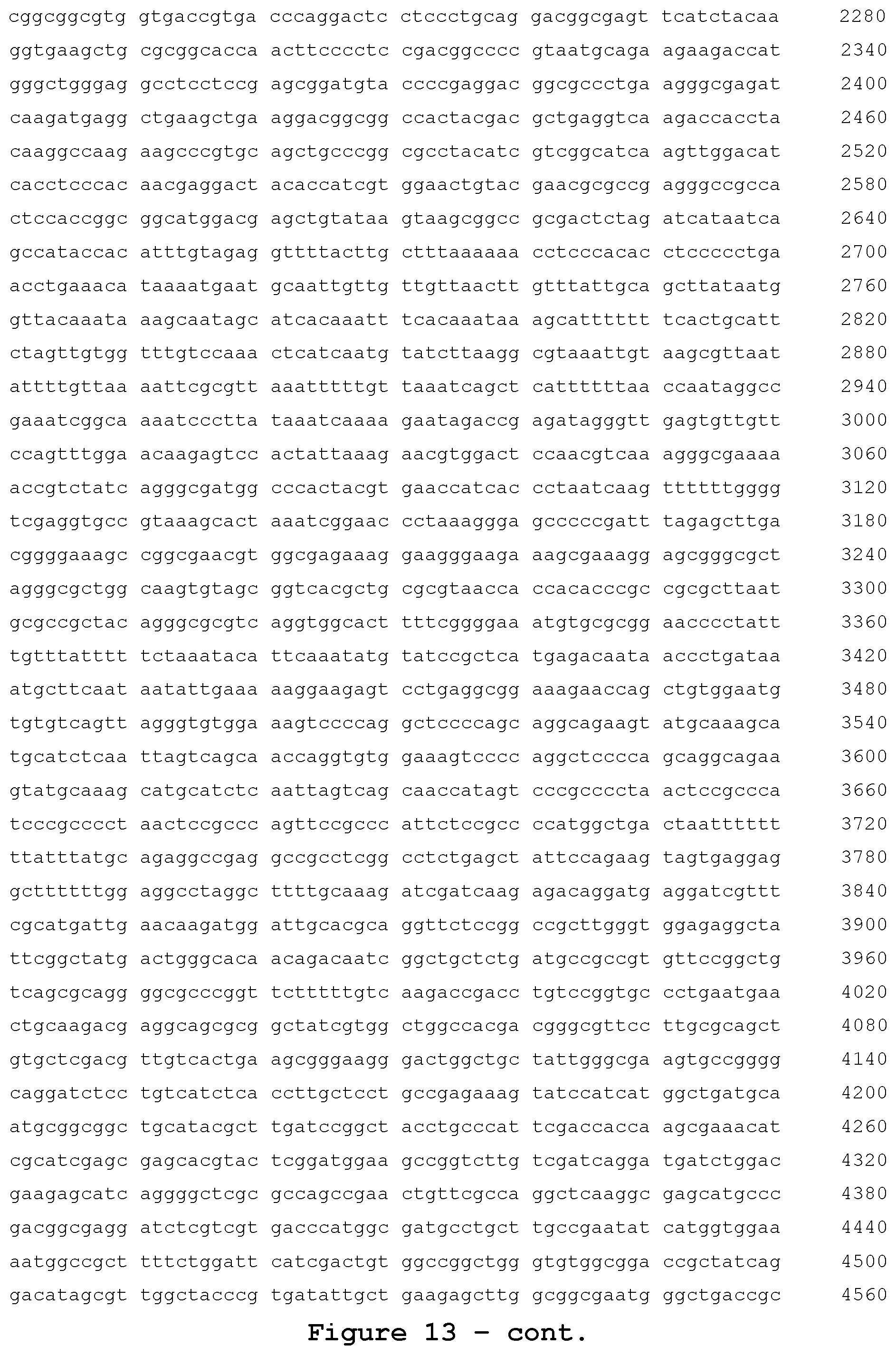
D00015
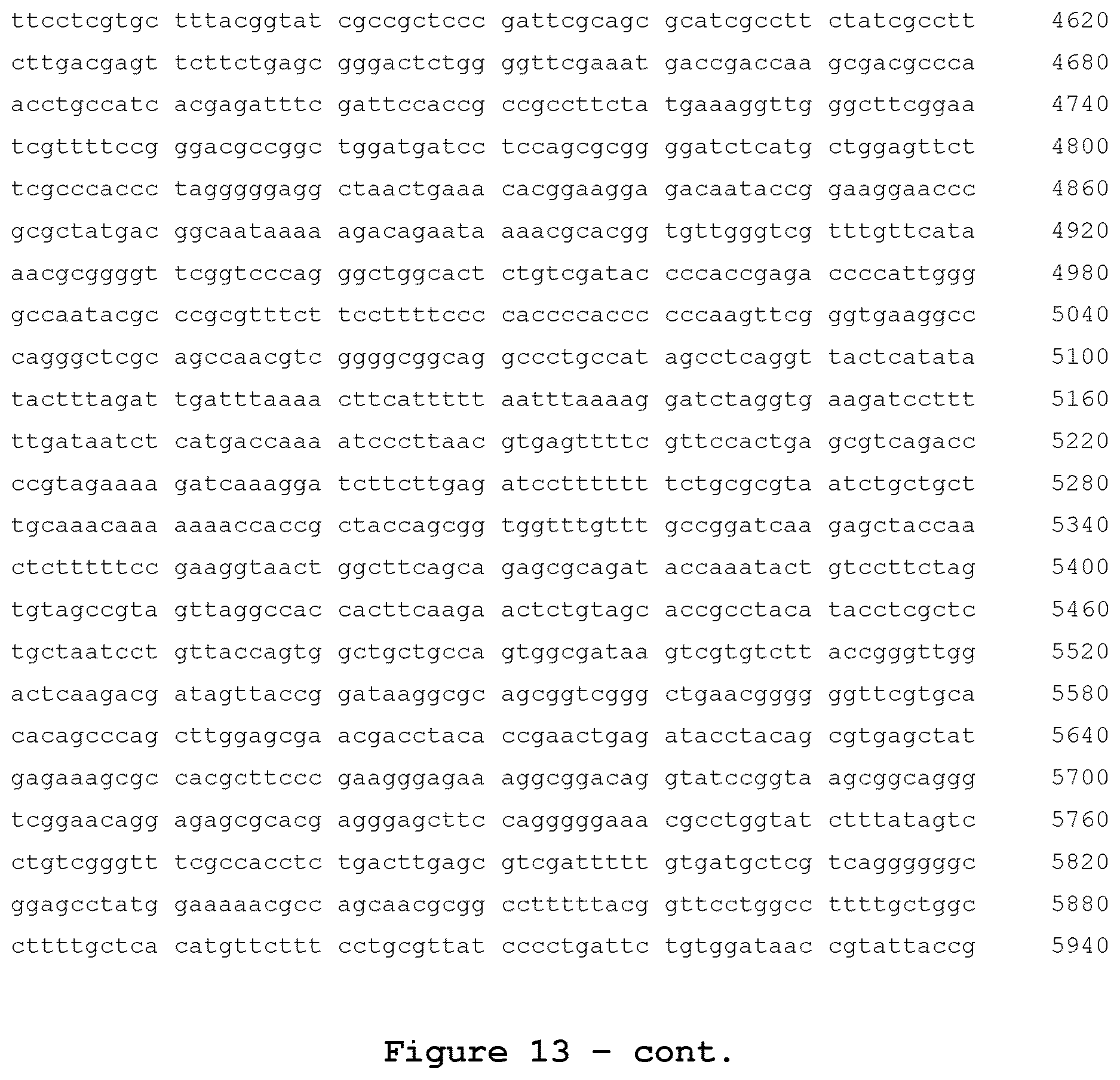
S00001
XML
uspto.report is an independent third-party trademark research tool that is not affiliated, endorsed, or sponsored by the United States Patent and Trademark Office (USPTO) or any other governmental organization. The information provided by uspto.report is based on publicly available data at the time of writing and is intended for informational purposes only.
While we strive to provide accurate and up-to-date information, we do not guarantee the accuracy, completeness, reliability, or suitability of the information displayed on this site. The use of this site is at your own risk. Any reliance you place on such information is therefore strictly at your own risk.
All official trademark data, including owner information, should be verified by visiting the official USPTO website at www.uspto.gov. This site is not intended to replace professional legal advice and should not be used as a substitute for consulting with a legal professional who is knowledgeable about trademark law.